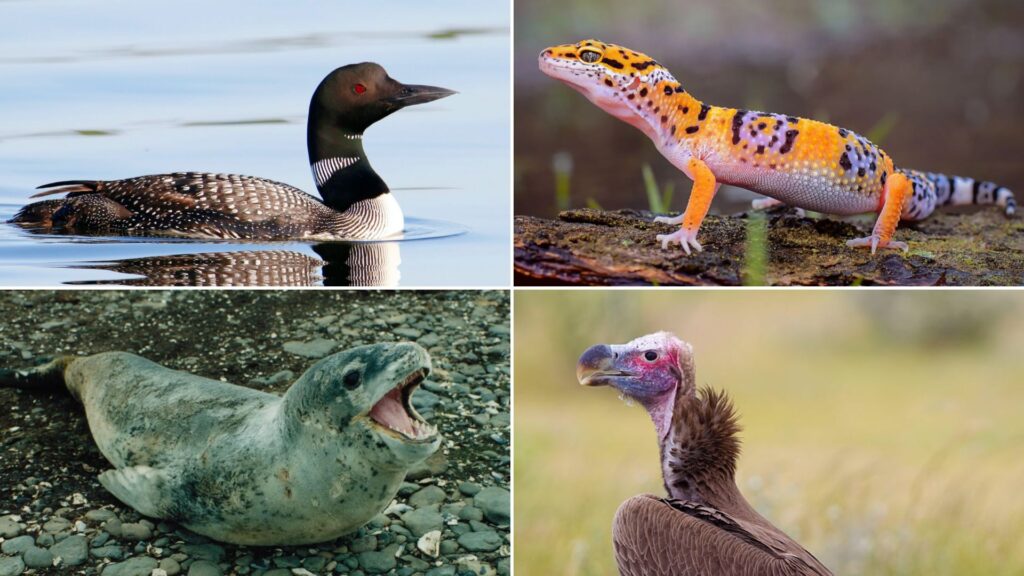Have you ever wondered about the amazing animals with L that roam our planet? From lovable Labrador Retrievers to fierce Lions, the animal kingdom boasts many creatures starting with this letter.
These beings captivate us with their unique traits and behaviors, playing vital roles in ecosystems worldwide.
Did you know there are over 40 fascinating animals whose names begin with L? This list will take you on a journey through diverse habitats, from lush forests to deep oceans, introducing you to well-known and lesser-known species.
Whether you’re an animal lover, a curious learner, or simply looking to expand your knowledge, our exploration of 40 animals with L will revive your interest and leave you eager to discover more about these remarkable creatures.
Names of Animals that Start with the Alphabet ‘L’
The animal kingdom is full of fascinating creatures, and those whose names begin with the letter L are no exception. The L group offers diverse species from land to sea, from tiny insects to massive mammals.
This section will explore some of the most interesting animals with L names. Each creature’s unique traits, habitats, and behaviors stand out.
Whether you’re an animal enthusiast or just curious about wildlife, you will discover something new and exciting as we study this list of animals that start with L.
1. Leopard
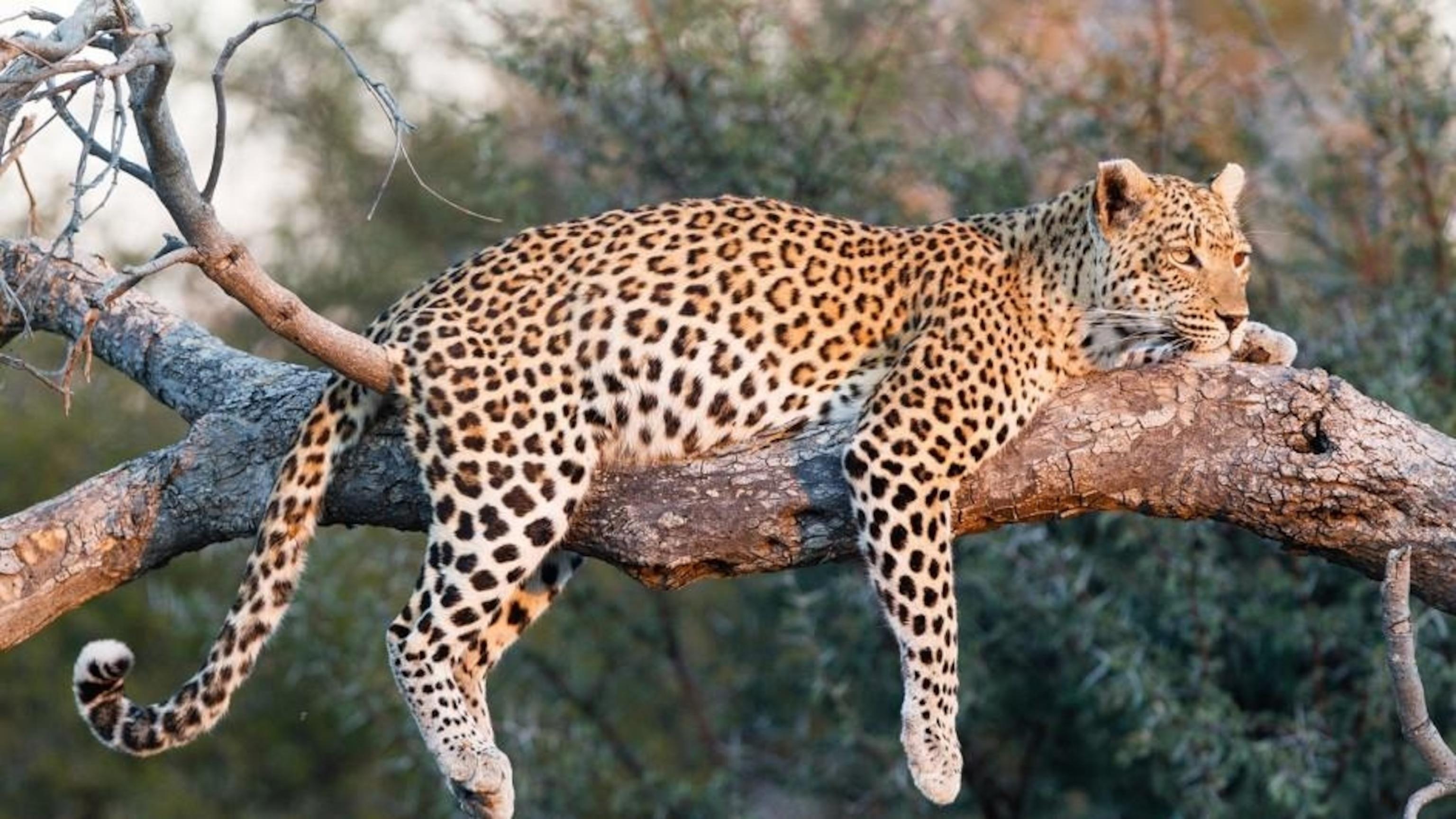
Leopards are swift and powerful big cats known for their spotted coats and stealthy hunting skills.
These adaptable predators live in diverse habitats across Africa and Asia.
- Region of Habitat: Sub-Saharan Africa, parts of the Middle East, South and Southeast Asia
- Scientific Name: Panthera pardus
- Place of Origin: Africa and Asia
- Feeding Habits: Carnivorous, hunting a variety of prey
- What Sound They Make: Growls, roars, and snarls
Fun Fact: Leopards are excellent climbers, often dragging their prey into trees to protect it from scavengers.
Leopards are also known for their adaptability, thriving in various environments, from deserts to rainforests.
2. Lion
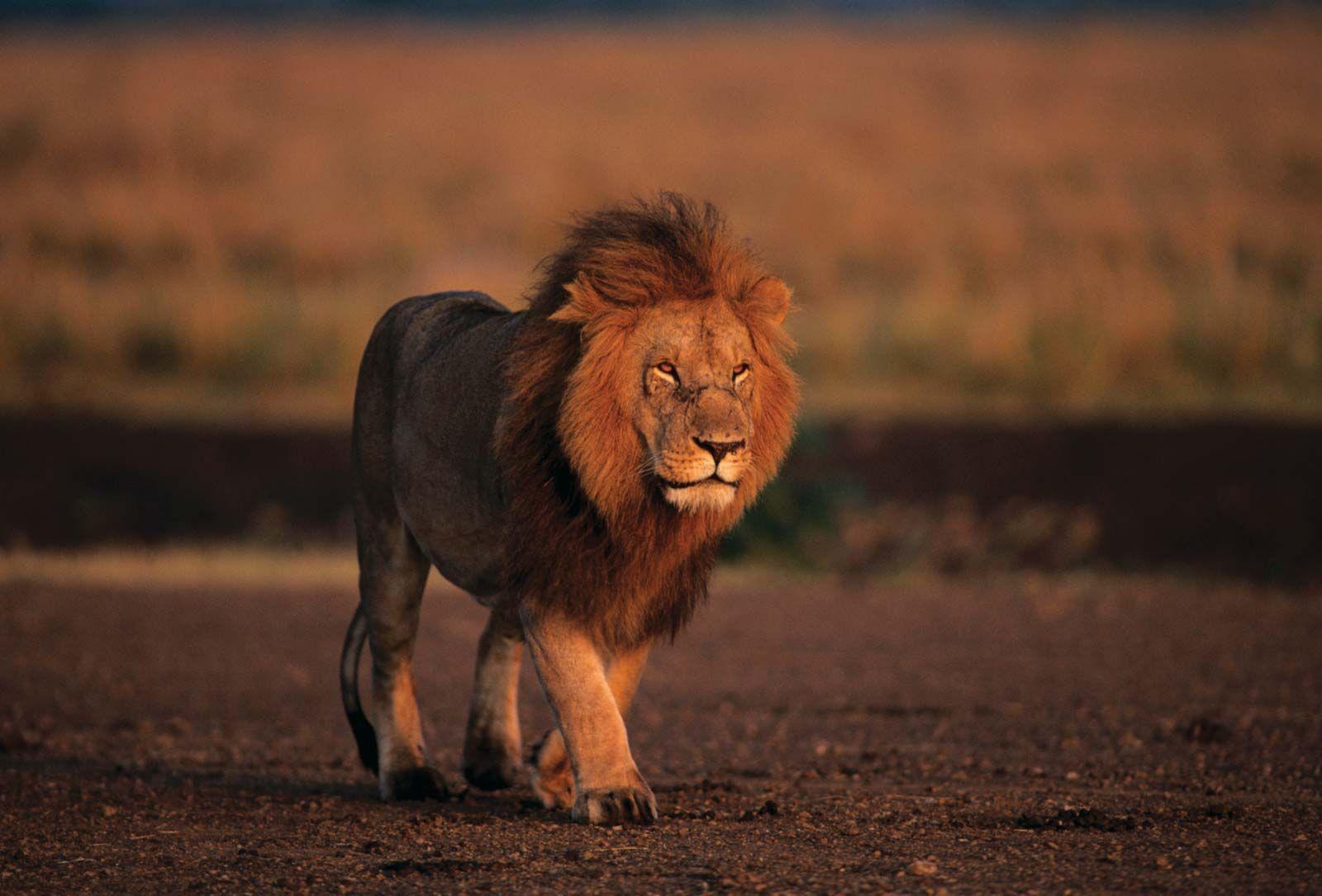
Lions, often called the “kings of the jungle,” are majestic big cats living in social groups called prides.
They are the only social cats in the animal kingdom, often engaging in cooperative hunting and territory defense.
- Region of Habitat: Sub-Saharan Africa, a small population in India’s Gir Forest
- Scientific Name: Panthera leo
- Place of Origin: Africa and India
- Feeding Habits: Carnivorous, primarily hunting large ungulates
- What Sound They Make: Roars, growls, and grunts
Fun Fact: A lion’s roar can be heard up to 8 km away and helps mark territory.
Male lions are easily recognizable by their impressive manes, which protect their necks during fights.
3. Lemur
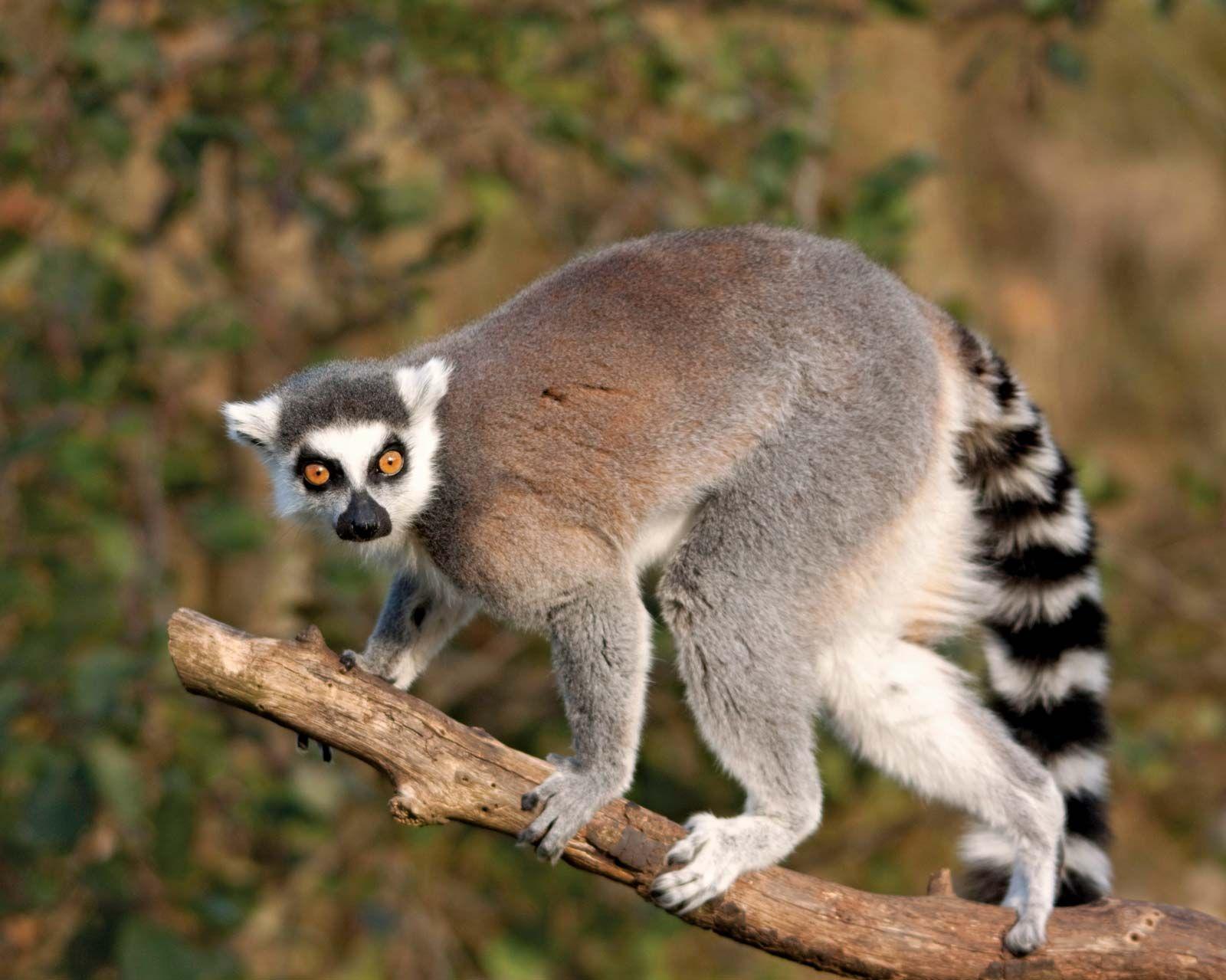
Lemurs are unique primates found only on the island of Madagascar. These wide-eyed creatures come in various sizes and colors, from tiny mouse lemurs to the larger ring-tailed lemurs.
They are highly social and engage in vocal communication within their groups.
- Region of Habitat: Madagascar
- Scientific Name: Lemuroidea (superfamily)
- Place of Origin: Madagascar
- Feeding Habits: Primarily herbivorous, eating fruits, leaves, and flowers
- What Sound They Make: Various vocalizations, including grunts and wails
Fun Fact: The word “lemur” comes from Latin and means “ghost” or “spirit,” likely due to their nocturnal habits and reflective eyes.
Lemurs are also one of the most endangered groups of mammals due to habitat destruction.
4. Lynx
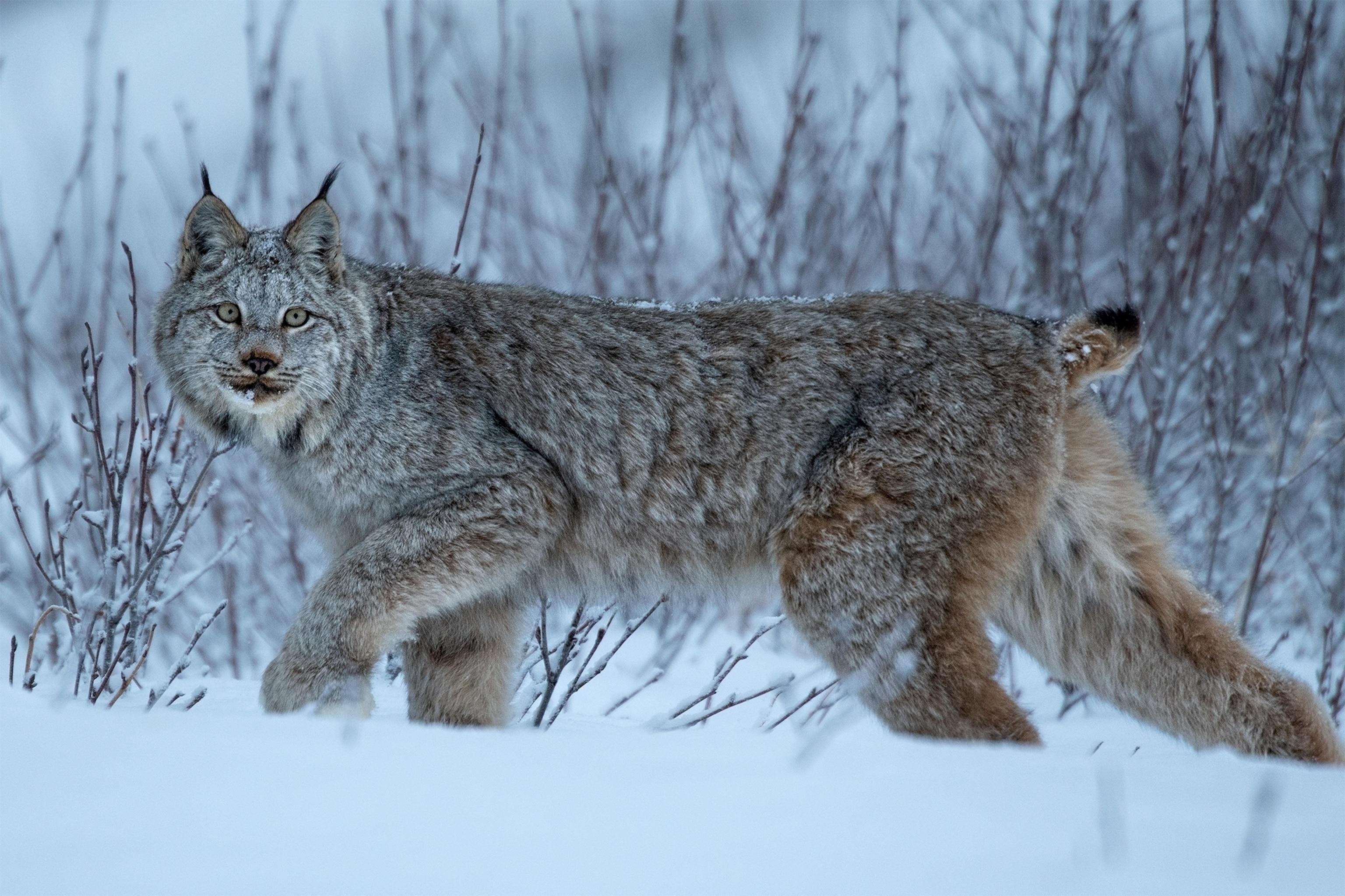
Lynx are medium-sized wild cats known for their distinctive tufted ears and short tails. These elusive predators are well-adapted to cold climates and deep snow.
Their thick fur and large paws help them navigate and hunt in harsh winter.
- Region of Habitat: North America, Europe, and Asia
- Scientific Name: Lynx (genus)
- Place of Origin: Northern Hemisphere
- Feeding Habits: Carnivorous, primarily hunting small mammals and birds
- What Sound They Make: Growls, meows, and purrs
Fun Fact: A lynx’s hearing is so sharp that it can hear a mouse under a foot of snow.
They also have excellent vision, which helps them spot prey from a distance.
5. Llama
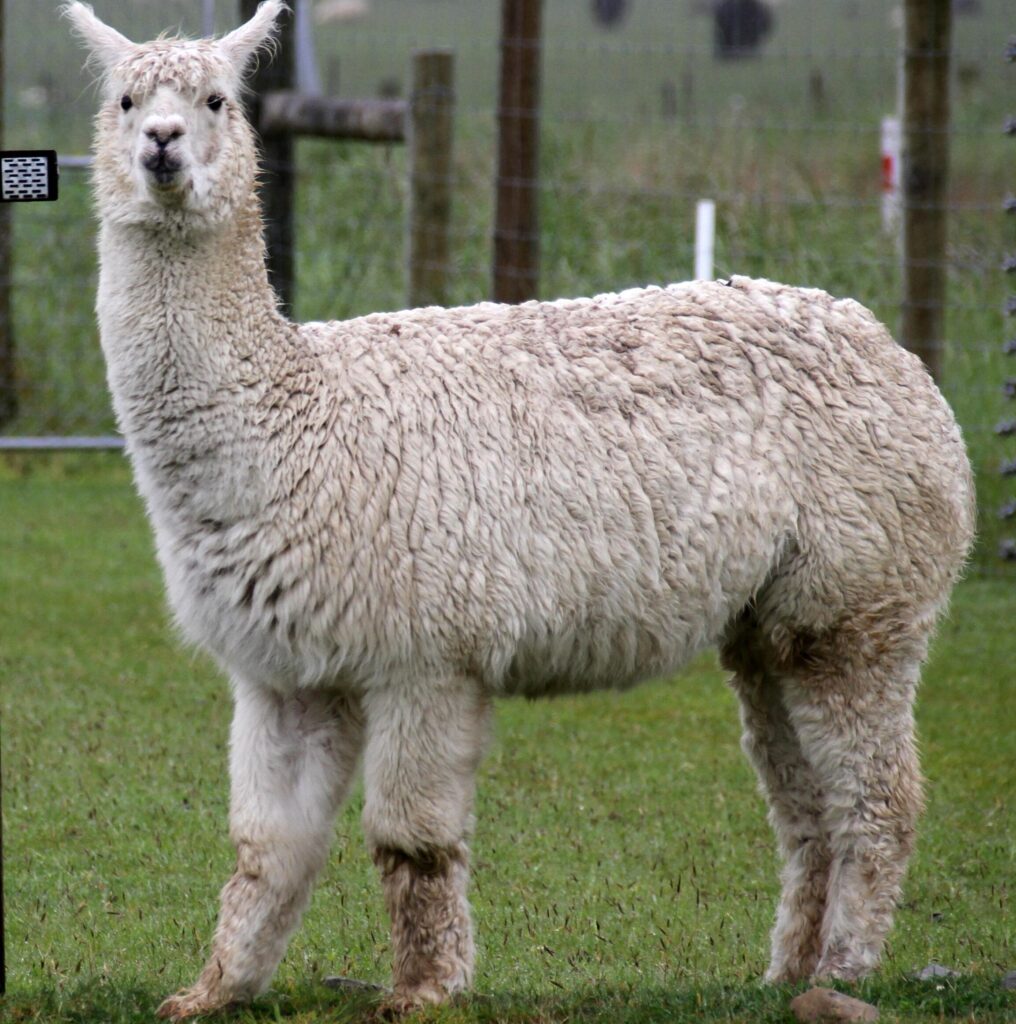
Llamas are domesticated South American camelids known for their wool and use as pack animals.
These gentle creatures have been important to Andean cultures for thousands of years.
- Region of Habitat: South American Andes
- Scientific Name: Lama glama
- Place of Origin: Andes Mountains, South America
- Feeding Habits: Herbivorous, grazing on grasses and plants
- What Sound They Make: Humming, clucking, and alarm calls
Fun Fact: Llamas are social animals sometimes used as guards for sheep flocks, protecting them from coyotes and other predators.
They are also known for their curious and friendly nature, often approaching humans without fear.
6. Loris
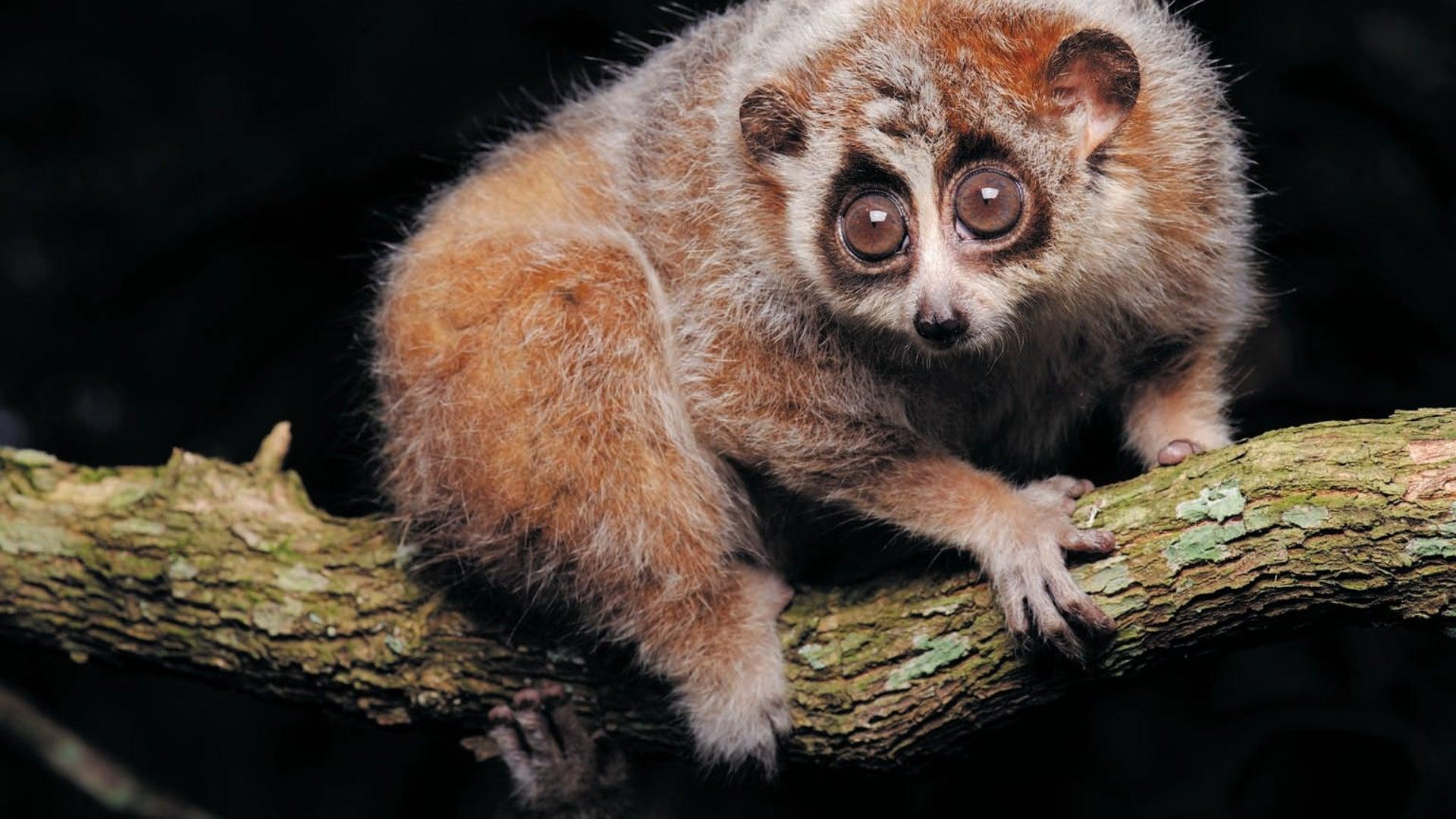
Lorises are small, nocturnal primates known for their slow, deliberate movements.
They have large, forward-facing eyes adapted for night vision and are primarily insectivorous but consume fruits and vegetation.
- Region of Habitat: Southeast Asia, including India, Sri Lanka, and Indonesia
- Scientific Name: Nycticebus
- Place of Origin: Southeast Asia
- Feeding Habits: Insectivorous, also eating fruits and vegetation
- What Sound They Make: Whistles and clicks
Fun Fact: Lorises have a toxic bite, a rare trait among mammals. This bite is used for defense and to capture prey.
They also have a slow metabolism, which contributes to their deliberate movements.
7. Liger
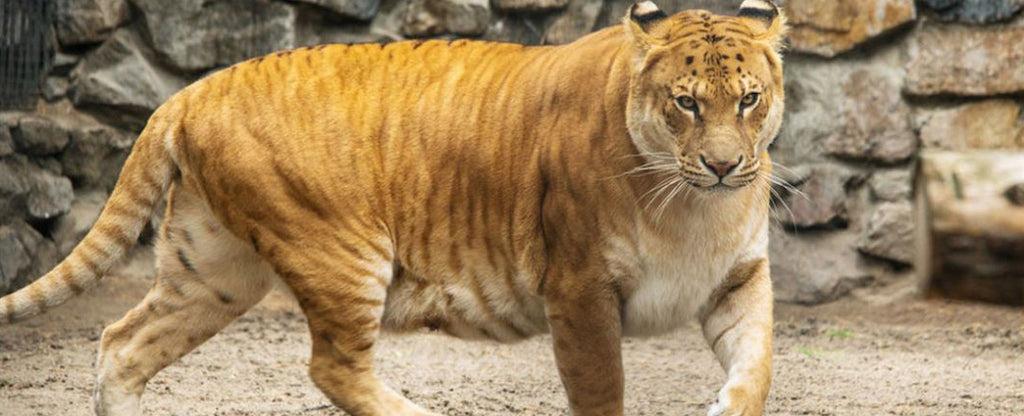
A liger is a hybrid cross between a male lion and a female tiger. They are typically larger than either parent species, displaying a blend of physical and behavioral traits from lions and tigers.
- Region of Habitat: Primarily in captivity, not found in the wild
- Scientific Name: Panthera leo × Panthera tigris
- Place of Origin: Captivity, human-bred
- Feeding Habits: Carnivorous, similar to lions and tigers
- What Sound They Make: Roars and growls
Fun Fact: Ligers are the largest of all known extant felines, capable of reaching over 12 feet long when standing on their hind legs.
They also enjoy swimming, a trait inherited from their tiger parent.
8. Labrador Retriever

Labrador Retrievers are friendly, outgoing, and high-spirited companions.
They are highly versatile and excel in various roles, including guide dogs, search and rescue, and hunting.
- Region of Habitat: Originally from Newfoundland, now popular worldwide
- Scientific Name: Canis lupus familiaris
- Place of Origin: Newfoundland, Canada
- Feeding Habits: An omnivorous diet includes kibble, meats, and vegetables
- What Sound They Make: Barks and howls
Fun Fact: According to the American Kennel Club, Labrador Retrievers are the most popular dog breed in the United States.
They are known for their intelligence and trainability, making them excellent service dogs.
9. Lemming
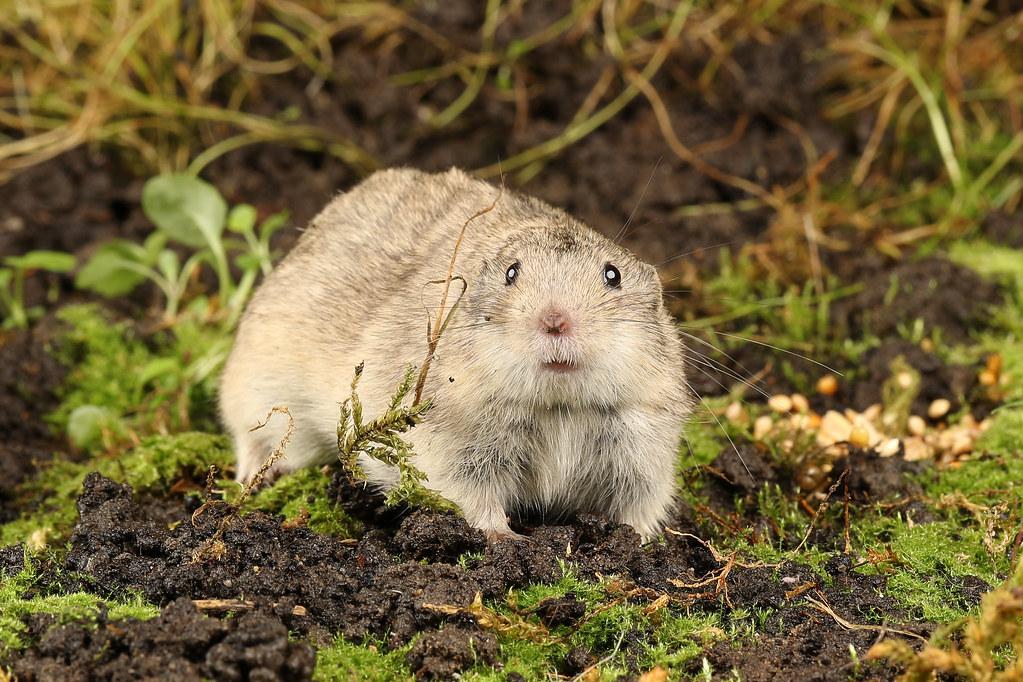
Lemmings are small, burrowing rodents known for their dramatic population fluctuations and mass migrations.
They have stout bodies and short legs and are covered in thick fur to withstand cold climates.
- Region of Habitat: Arctic and subarctic areas of North America and Eurasia
- Scientific Name: Lemmus lemmus
- Place of Origin: Arctic regions
- Feeding Habits: Herbivorous, eating grasses, roots, and berries
- What Sound They Make: High-pitched squeaks
Fun Fact: Contrary to popular myth, lemmings do not commit mass suicide; their population dynamics and migrations can lead to accidental deaths.
Lemmings are also crucial for the ecosystem as prey for many Arctic predators.
10. Langur
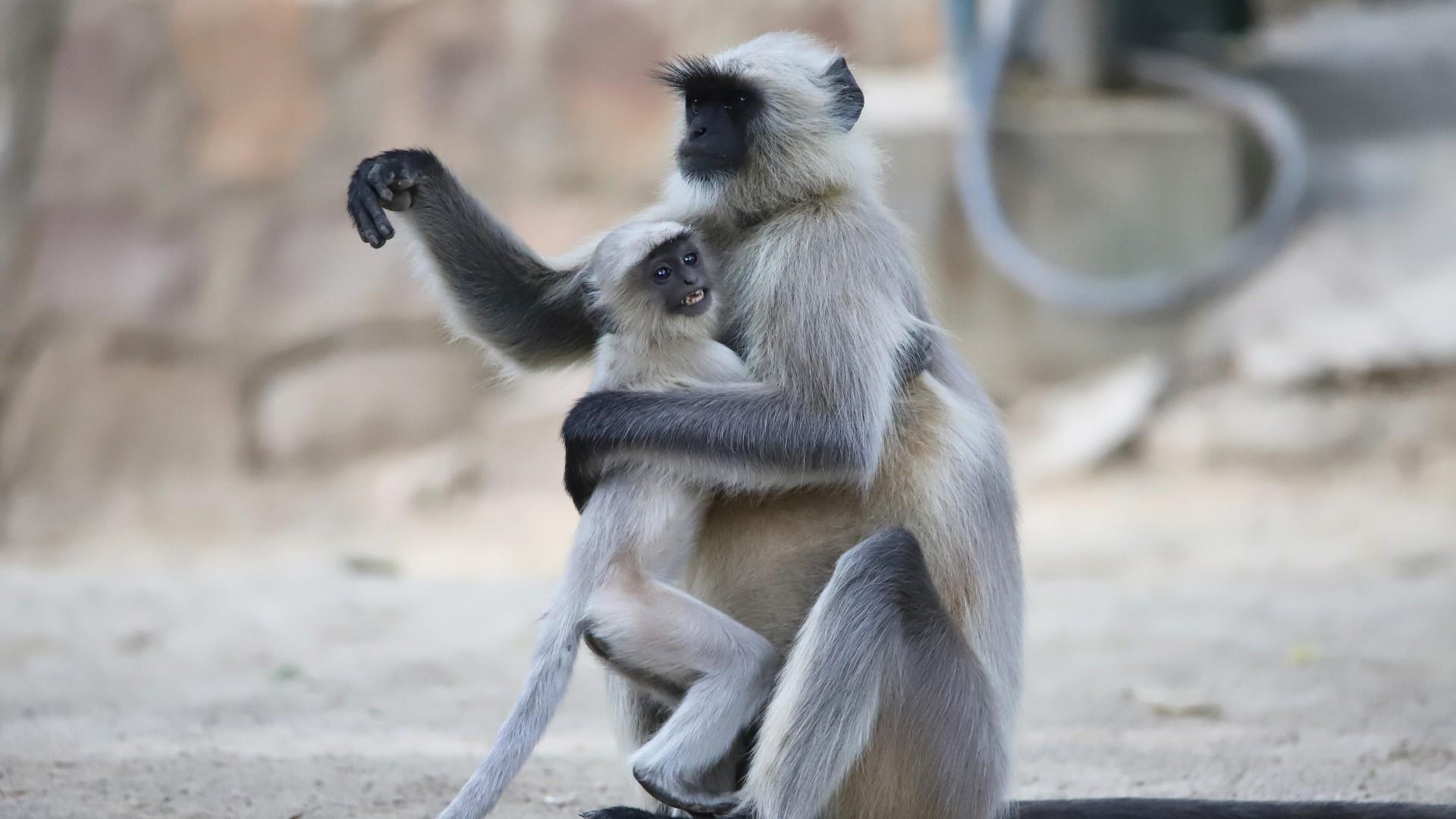
Langurs are a group of Old World monkeys known for their long tails and distinctive facial features.
They are primarily herbivorous, feeding on leaves, fruits, and flowers.
- Region of Habitat: South and Southeast Asia
- Scientific Name: Semnopithecus
- Place of Origin: Asia
- Feeding Habits: Herbivorous, primarily leaves and fruits
- What Sound They Make: Various vocalizations, including barks and hoots
Fun Fact: Langurs have a complex stomach that, like a cow’s digestive system, helps them digest a high-fiber diet of leaves. They also live in social groups with complex hierarchies.
11. Lyrebird
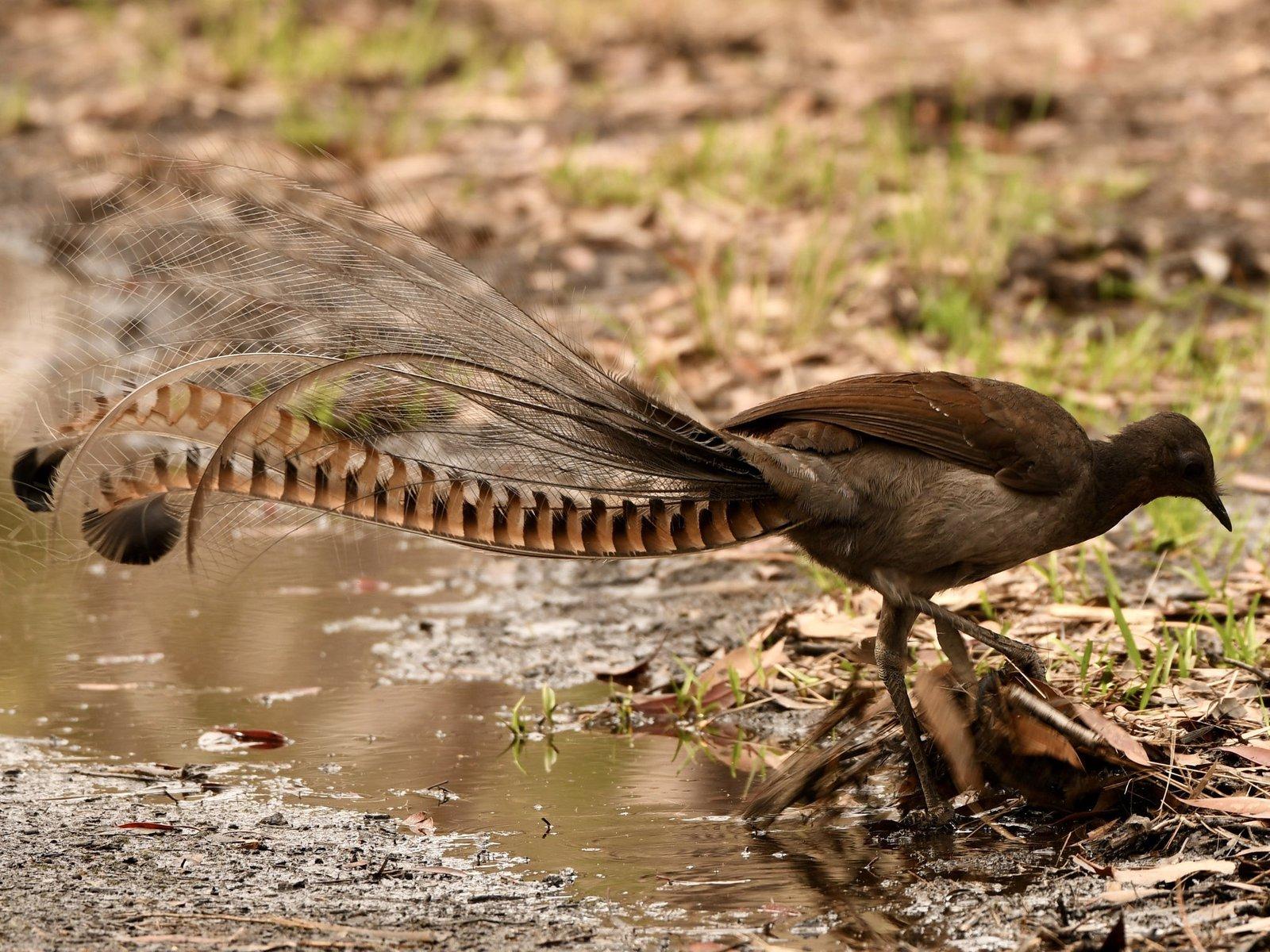
Lyrebirds are ground-dwelling Australian birds famous for their extraordinary ability to mimic natural and artificial sounds from their environment, including chainsaws and camera shutters.
- Region of Habitat: Eastern Australia, including Tasmania
- Scientific Name: Menura
- Place of Origin: Australia
- Feeding Habits: Omnivorous, eating insects and seeds
- What Sound They Make: Complex mimicry of various sounds
Fun Fact: Male lyrebirds use their superb mimicry during courtship displays to attract females.
Their tail feathers form a beautiful lyre shape when displayed.
12. Lorikeet
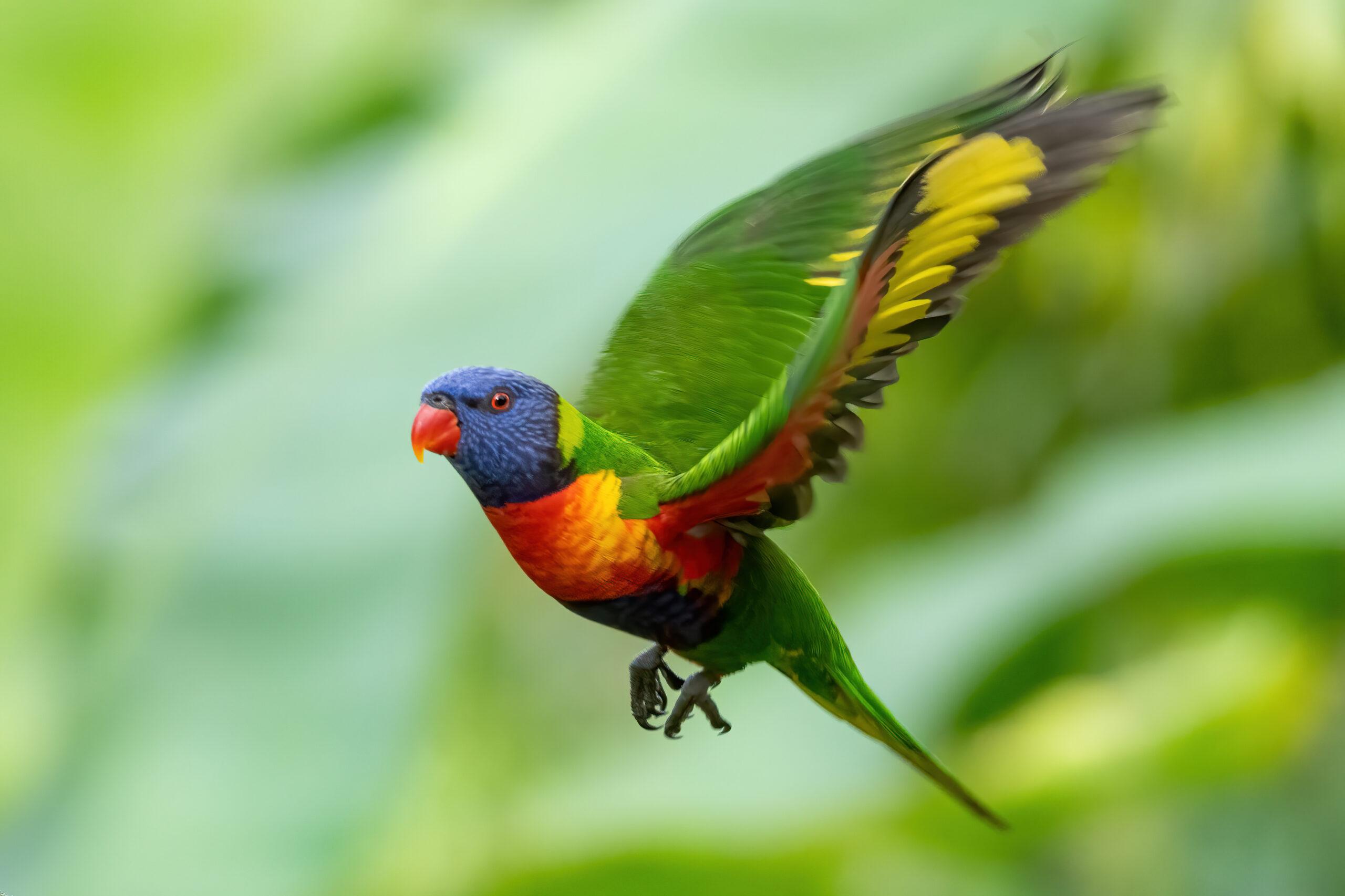
Lorikeets are small to medium-sized parrots known for their bright, colorful feathers and brush-tipped tongues, which they use to feed on nectar and pollen from flowers.
- Region of Habitat: Australasia, including Australia, Papua New Guinea, and Indonesia
- Scientific Name: Trichoglossus
- Place of Origin: Australasia
- Feeding Habits: Primarily nectar and pollen, also fruits
- What Sound They Make: Chatters and squawks
Fun Fact: Lorikeets have highly specialized diets and often travel in large, noisy flocks. They play a crucial role in pollination.
13. Long-Eared Owl
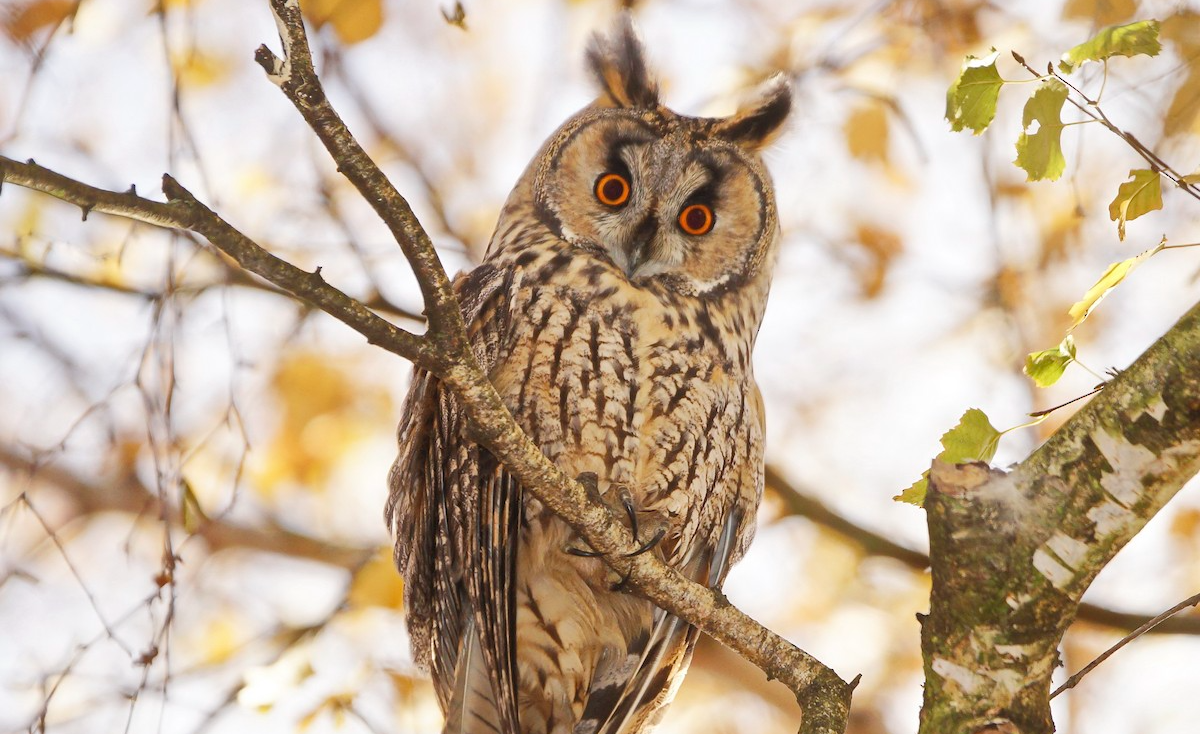
Long-eared owls are medium-sized with prominent ear tufts, not ears, but feather tufts that aid in camouflage. They are nocturnal and rely on their excellent hearing and vision to hunt.
- Region of Habitat: North America, Europe, and Asia
- Scientific Name: Asio otus
- Place of Origin: Northern Hemisphere
- Feeding Habits: Carnivorous, primarily small mammals and birds
- What Sound They Make: High-pitched calls and hoots
Fun Fact: Long-eared owls are known for their eerie, high-pitched calls that can be heard up to a mile away. They often reuse nests built by other birds.
14. Lovebird
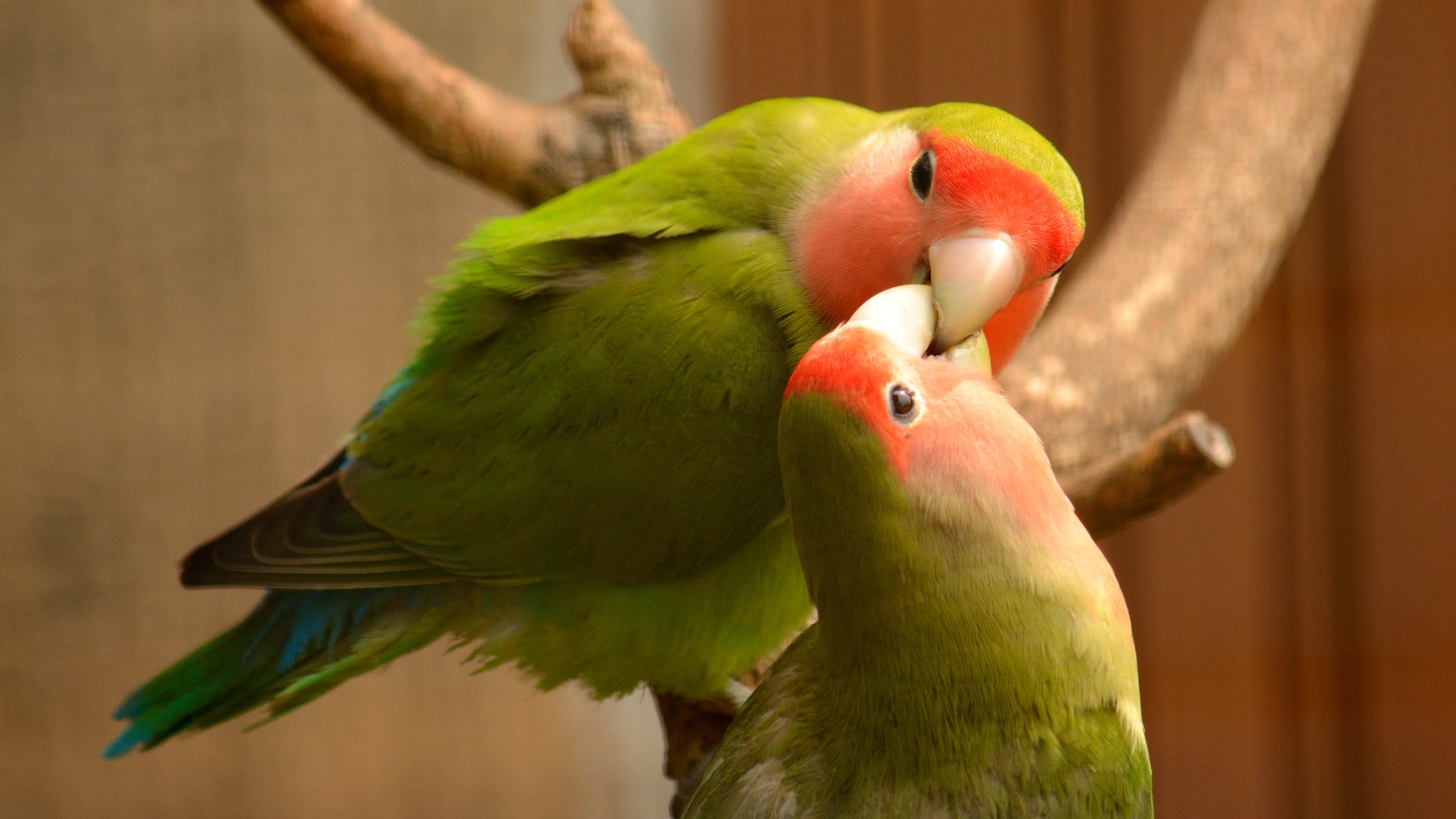
Lovebirds are small, brightly colored parrots known for their strong pair bonds and affectionate behavior towards their mates.
They are popular as pets due to their social nature and vibrant plumage.
- Region of Habitat: Native to Africa and Madagascar
- Scientific Name: Agapornis
- Place of Origin: Africa and Madagascar
- Feeding Habits: Herbivorous, primarily seeds and fruits
- What Sound They Make: Chatters and tweets
Fun Fact: Lovebirds are named for their strong, monogamous pair bonds and often sit closely together with their mate. They are also known for their playful and curious behavior.
15. Lesser Jacana
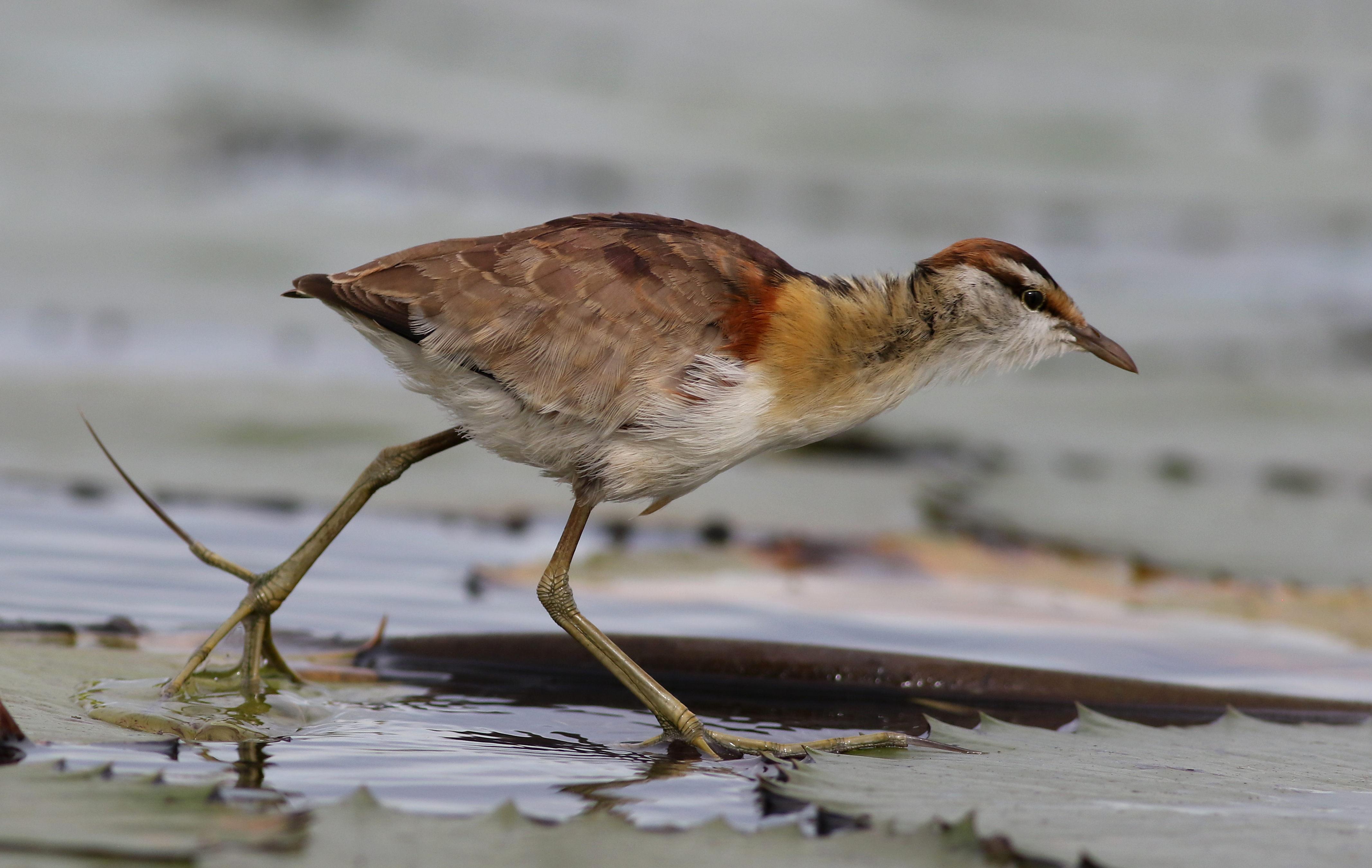
The Lesser Jacana is a small wader bird known for its long toes and claws, which enable it to walk on floating vegetation in wetlands. They are adapted to a life spent mostly on water.
- Region of Habitat: Sub-Saharan Africa
- Scientific Name: Microparra capensis
- Place of Origin: Africa
- Feeding Habits: Insectivorous, primarily aquatic insects
- What Sound They Make: Soft calls and whistles
Fun Fact: Lesser Jacanas are known for their distinctive “lily-trotting” behavior, walking on floating vegetation like lily pads. They are often seen moving gracefully across water surfaces.
16. Lesser Scaup
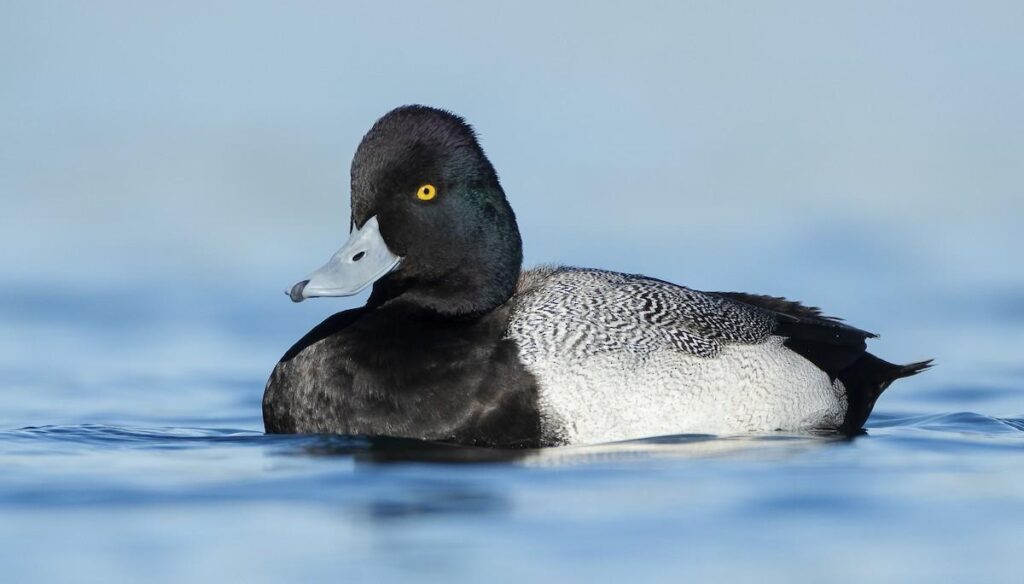
Lesser Scaups are medium-sized diving ducks known for their distinctive blue bills and striking black-and-white feathers. They are highly social and often form large flocks during migration.
- Region of Habitat: North America, primarily in freshwater lakes and rivers
- Scientific Name: Aythya affinis
- Place of Origin: North America
- Feeding Habits: Omnivorous, aquatic, principally plants and invertebrates
- What Sound They Make: Soft grunts and whistles
Fun Fact: Lesser Scaup males perform elaborate courtship displays to attract females during the breeding season. They are also known for their impressive diving abilities.
17. Long-Tailed Tit
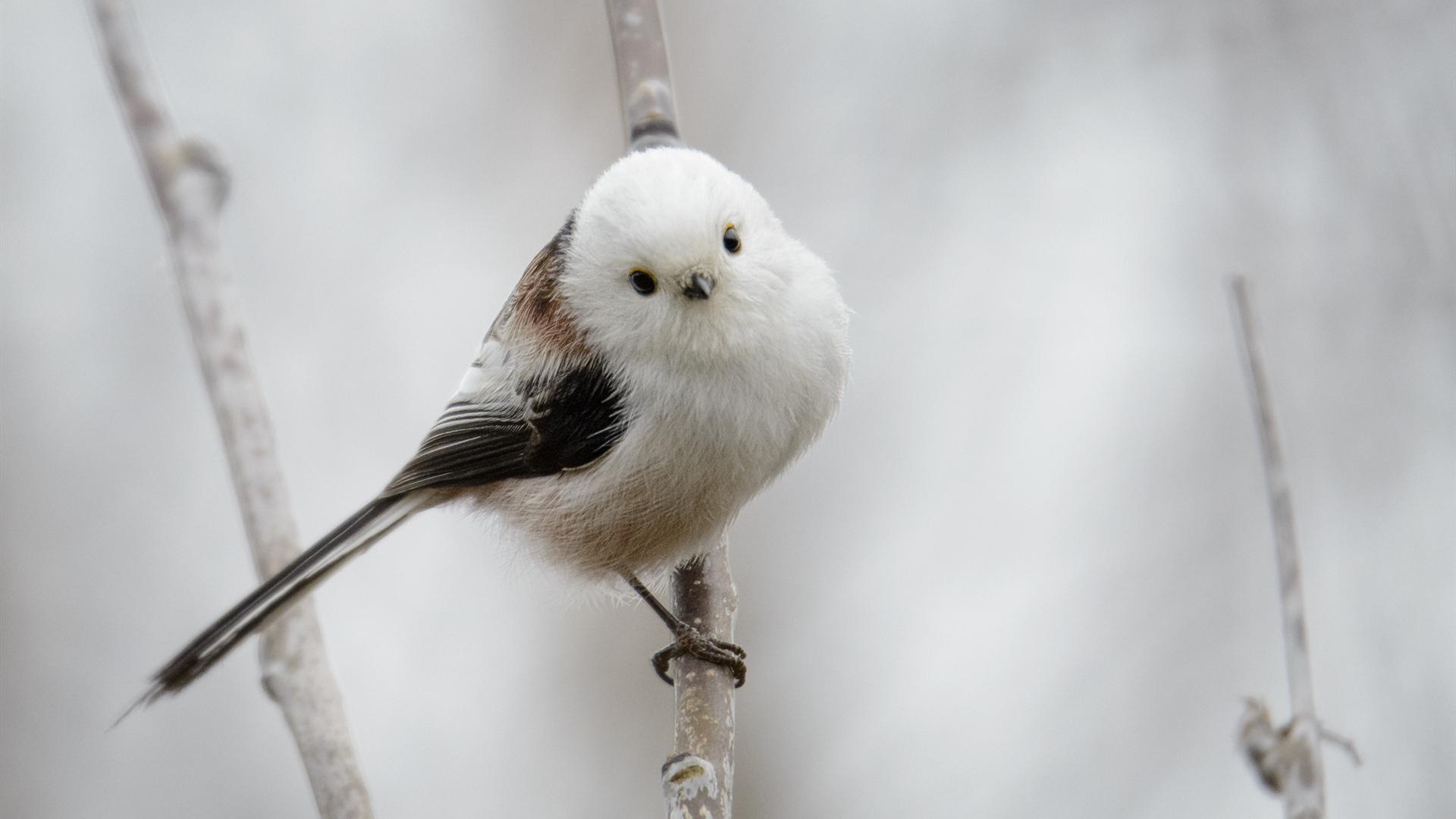
Long-Tailed Tits are small, round birds with a characteristic long tail that is almost as long as their body. They are social and often found in flocks, exhibiting cooperative breeding behavior.
- Region of Habitat: Europe and Asia
- Scientific Name: Aegithalos caudatus
- Place of Origin: Eurasia
- Feeding Habits: Insectivorous, primarily small insects and spiders
- What Sound They Make: Soft chirps and trills
Fun Fact: Long-Tailed Tits build intricate, domed nests made of moss, feathers, and spider silk. They often help raise the young of their relatives.
18. Lappet-Faced Vulture
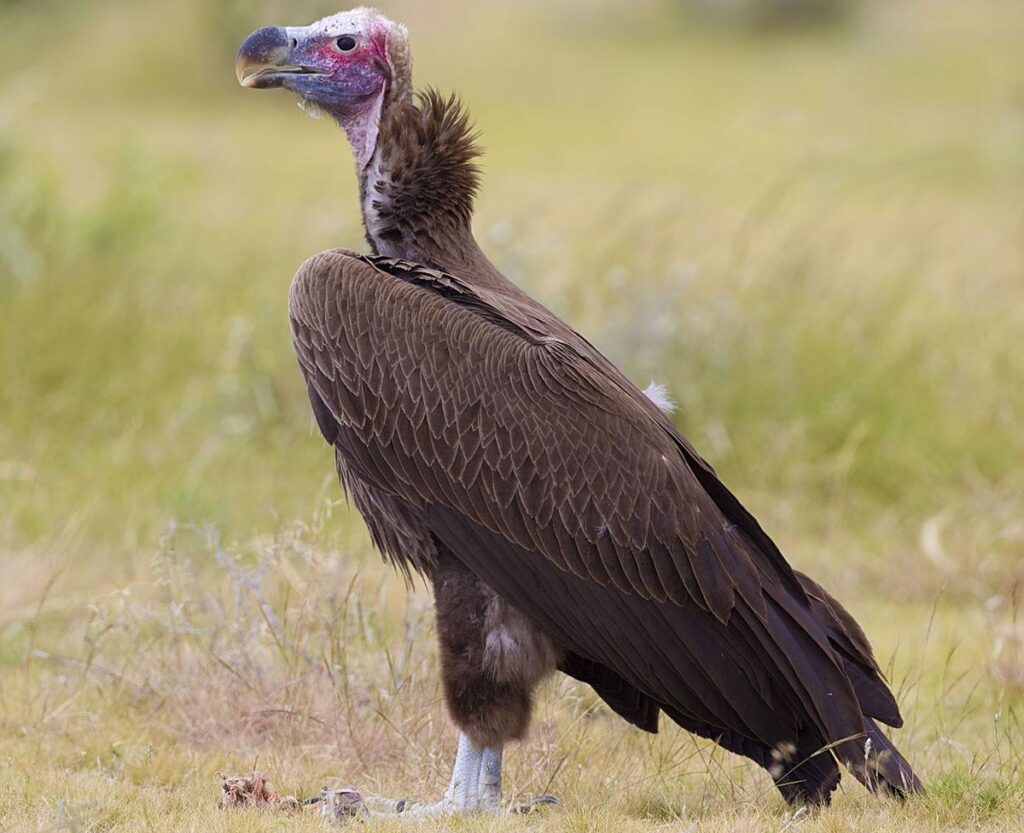
The Lappet-Faced Vulture is one of the largest vultures, known for its bare, reddish head and large, powerful bill.
They play a crucial role in ecosystems by consuming carrion and preventing the spread of disease.
- Region of Habitat: Africa, in savannas, deserts, and semi-arid areas
- Scientific Name: Torgos tracheliotos
- Place of Origin: Africa
- Feeding Habits: Scavenger, primarily carrion
- What Sound They Make: Hissing and grunting
Fun Fact: Lappet-faced vultures are strong enough to tear through the hides and bones of large carcasses that other scavengers cannot penetrate.
They are also known for tidiness, often cleaning their heads after feeding.
19. Little Penguin
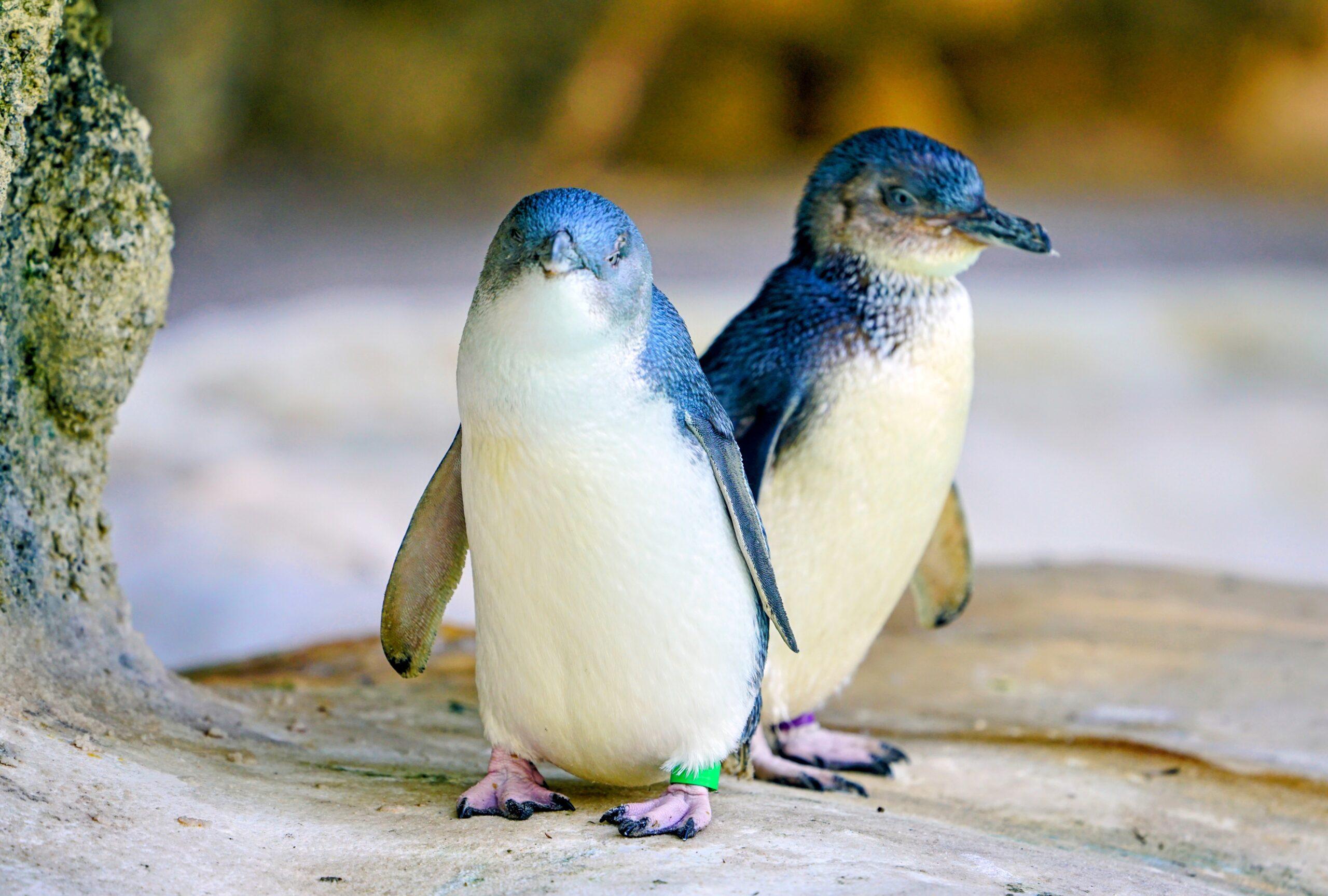
Little Penguins are the smallest species of penguin, also known as Fairy Penguins, due to their small size and delicate appearance.
They are excellent swimmers and spend a lot of time hunting for fish in the ocean.
- Region of Habitat: Coastal southern Australia and New Zealand
- Scientific Name: Eudyptula minor
- Place of Origin: Australia and New Zealand
- Feeding Habits: Carnivorous, primarily small fish and squid
- What Sound They Make: Braying and barking
Fun Fact: Little Penguins are the only penguin species with blue and white feathers, giving them a unique and charming appearance. They often return to the same nesting sites each year.
20. Lizard
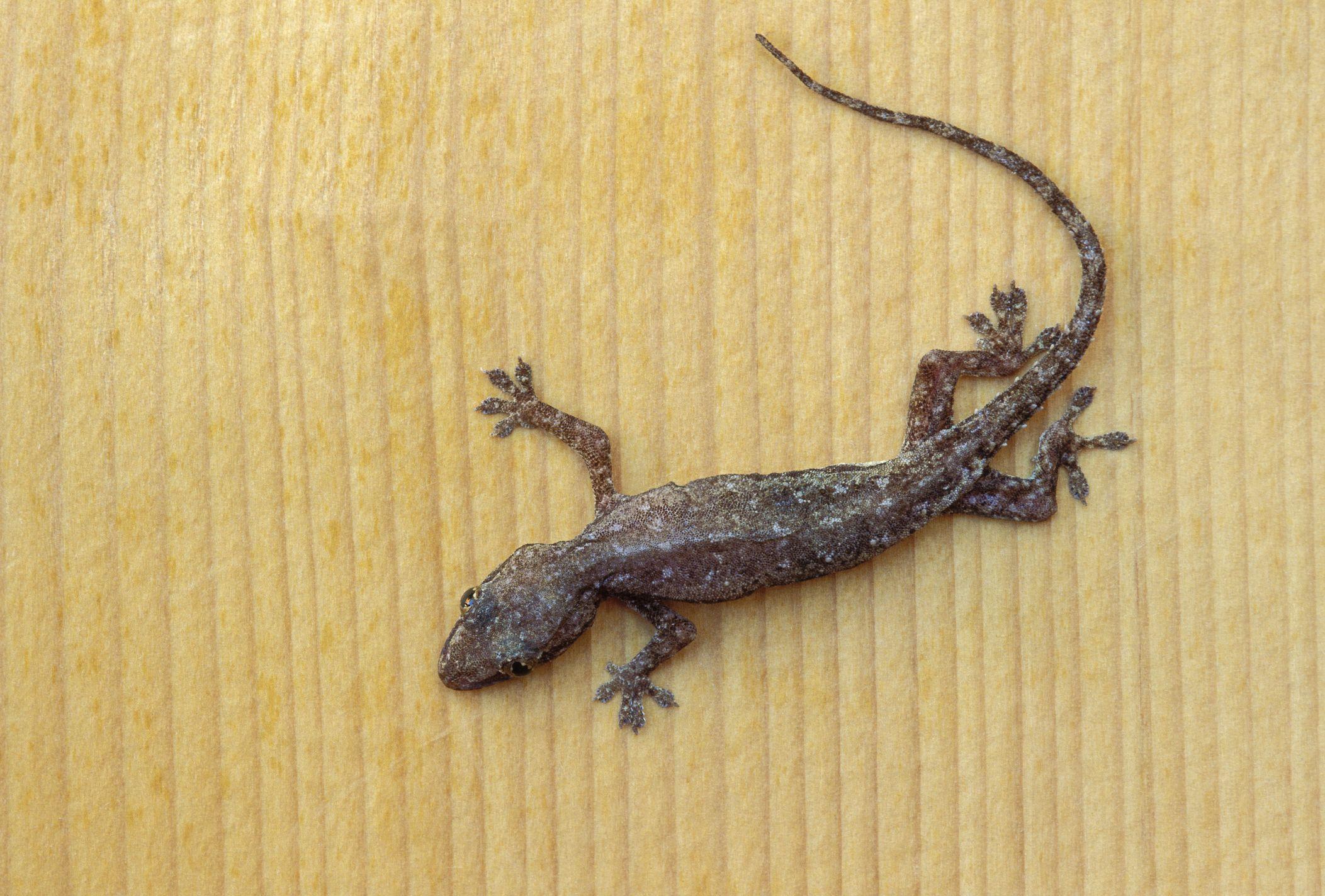
Lizards are a widespread group of squamate reptiles, with thousands of species ranging from small geckos to large monitors. They exhibit diverse habitats, behaviors, and diets.
- Region of Habitat: Worldwide in various habitats, from deserts to forests
- Scientific Name: Lacertilia (suborder)
- Place of Origin: Worldwide
- Feeding Habits: Varies by species, from insectivorous to herbivorous
- What Sound They Make: Hissing and chirping (varies by species)
Fun Fact: Some lizards, like the green anole, can change their color to blend into their surroundings. They are also known for their ability to regenerate lost tails.
21. Leopard Gecko
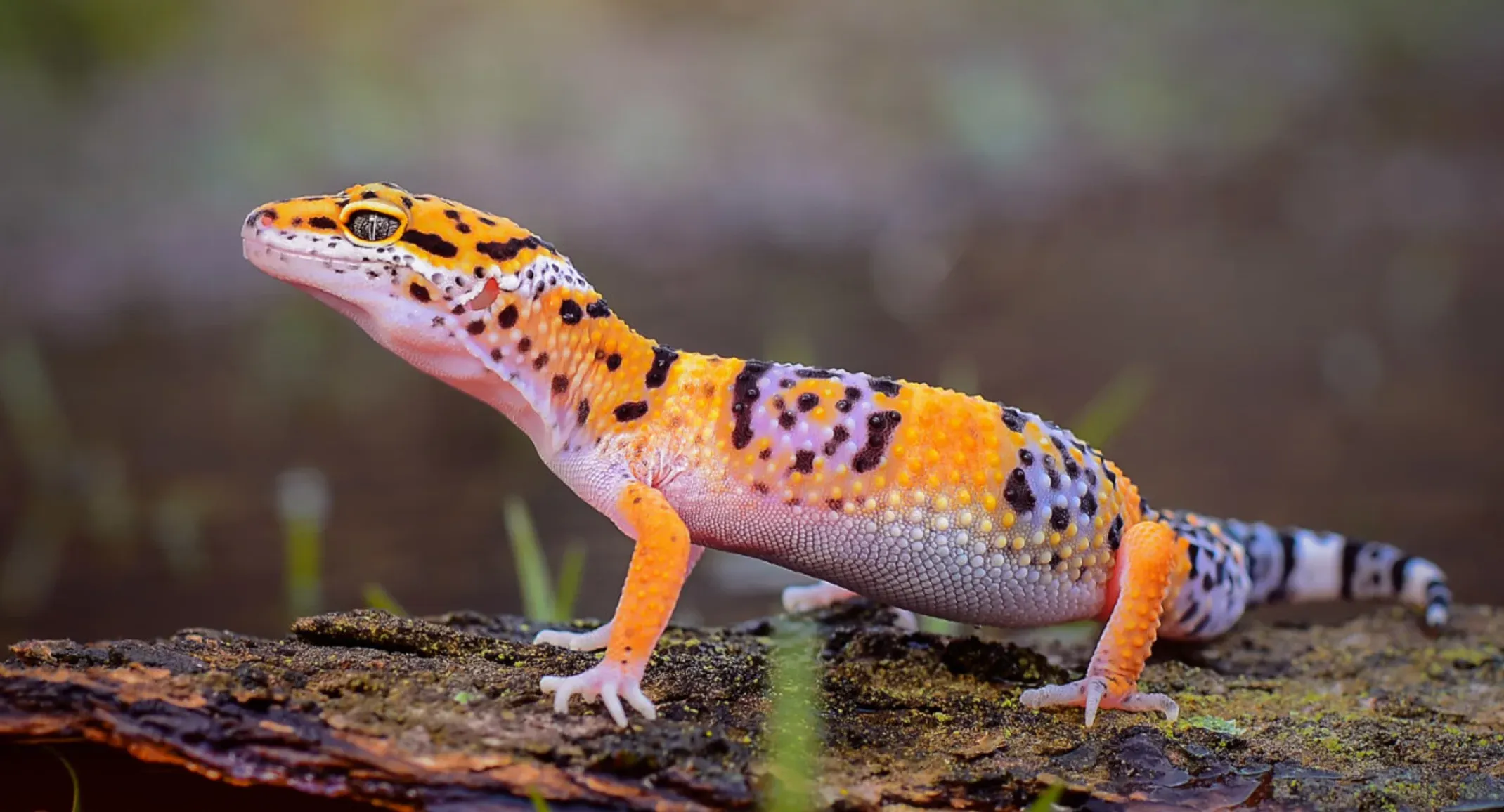
Leopard Geckos are small, nocturnal lizards known for their distinctive spotted patterns and docile nature. They are popular pets due to their ease of care and gentle temperament.
- Region of Habitat: Native to Pakistan, India, and Afghanistan deserts
- Scientific Name: Eublepharis macularius
- Place of Origin: South Asia
- Feeding Habits: Insectivorous, primarily crickets and mealworms
- What Sound They Make: Clicking and chirping
Fun Fact: Leopard geckos can regenerate lost tails, a fat reserve and defense mechanism against predators. They are also known for their wide variety of color morphs.
22. Leopard Frog
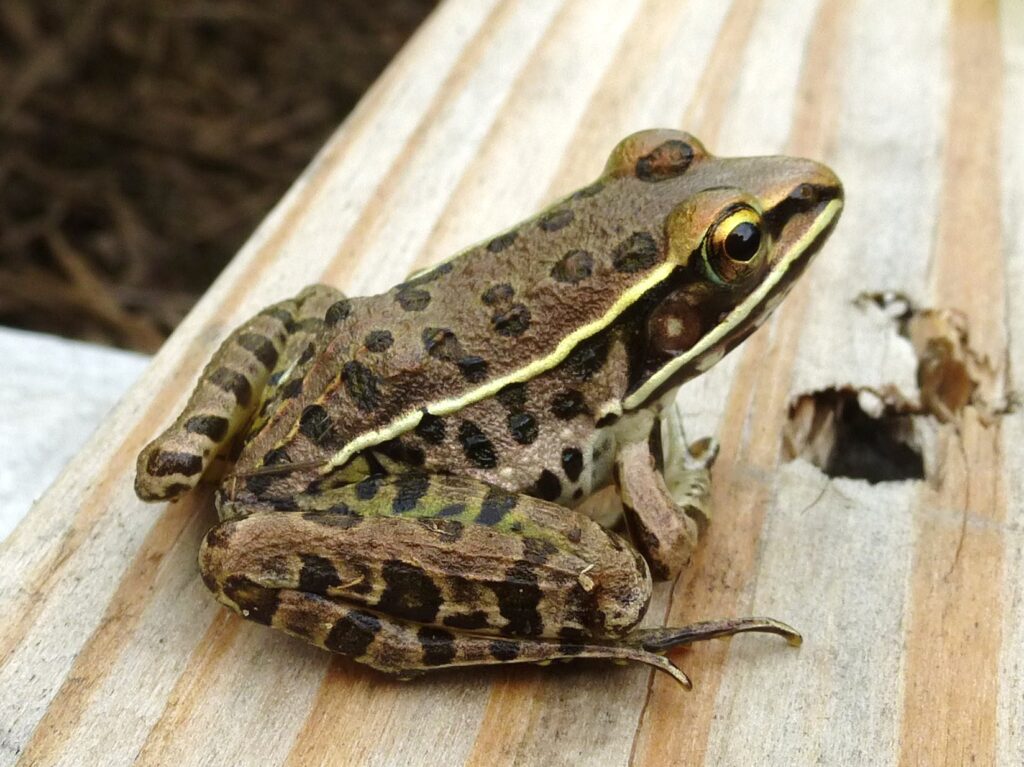
Leopard Frogs are medium-sized frogs known for their distinctive spotted patterns and loud calls.
They are commonly found in ponds, marshes, and slow-moving streams.
- Region of Habitat: North America, from Canada to Mexico
- Scientific Name: Lithobates pipiens
- Place of Origin: North America
- Feeding Habits: Carnivorous, primarily insects and small invertebrates
- What Sound They Make: Croaks and calls
Fun Fact: Leopard Frogs are often used in scientific research due to their hardy nature and abundance in the wild.
They are also known for their jumping ability, reaching up to three feet.
23. Lace Monitor
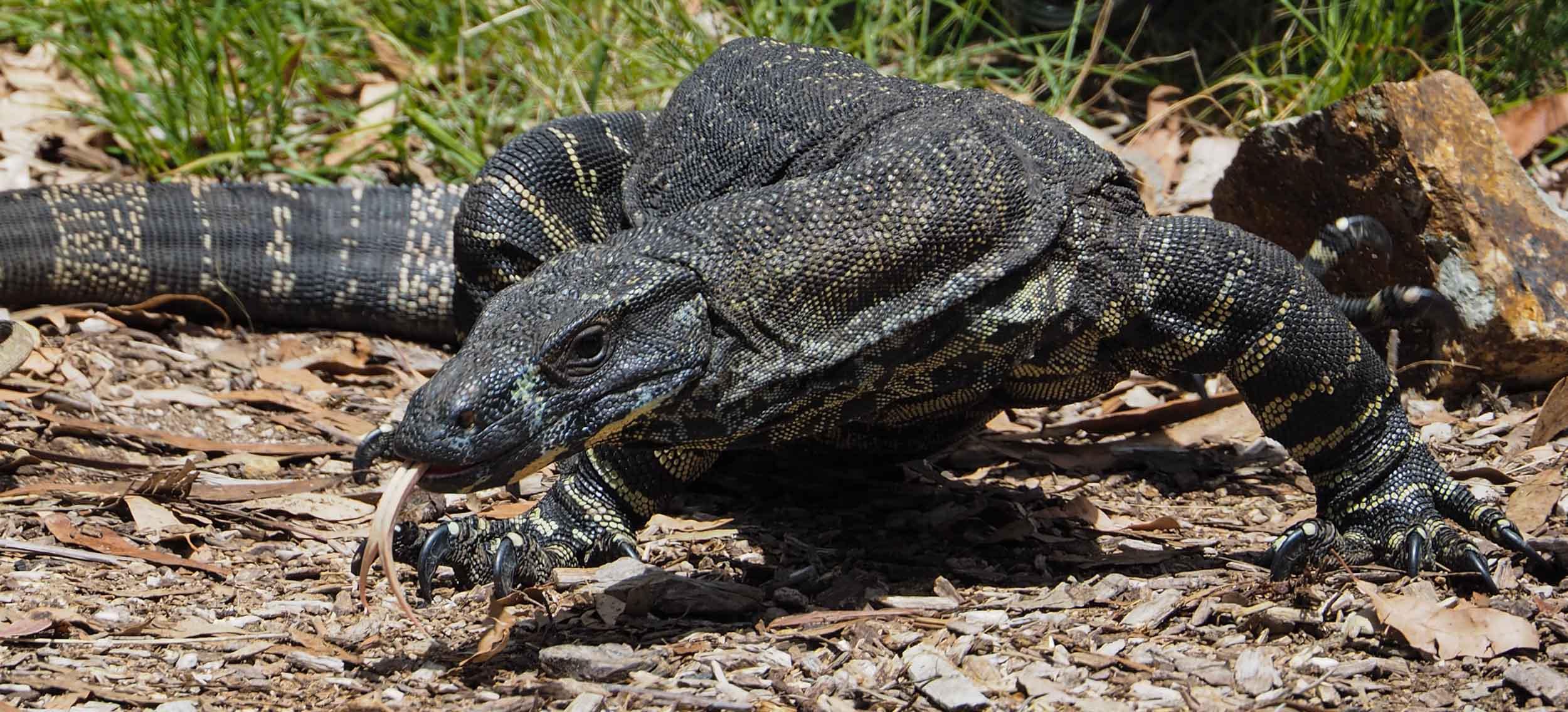
Lace Monitors are large Australian lizards known for their striking pattern of black and yellow bands.
They are excellent climbers and are often found in trees searching for food.
- Region of Habitat: Eastern Australia, in forests and woodlands
- Scientific Name: Varanus varius
- Place of Origin: Australia
- Feeding Habits: Carnivorous, eating birds, eggs, and small mammals
- What Sound They Make: Hissing
Fun Fact: Lace Monitors can consume a wide variety of prey, including birds, eggs, and small mammals, due to their strong claws and powerful jaws.
They also make a loud, terrifying hissing sound when threatened.
24. Leaf-Tailed Gecko
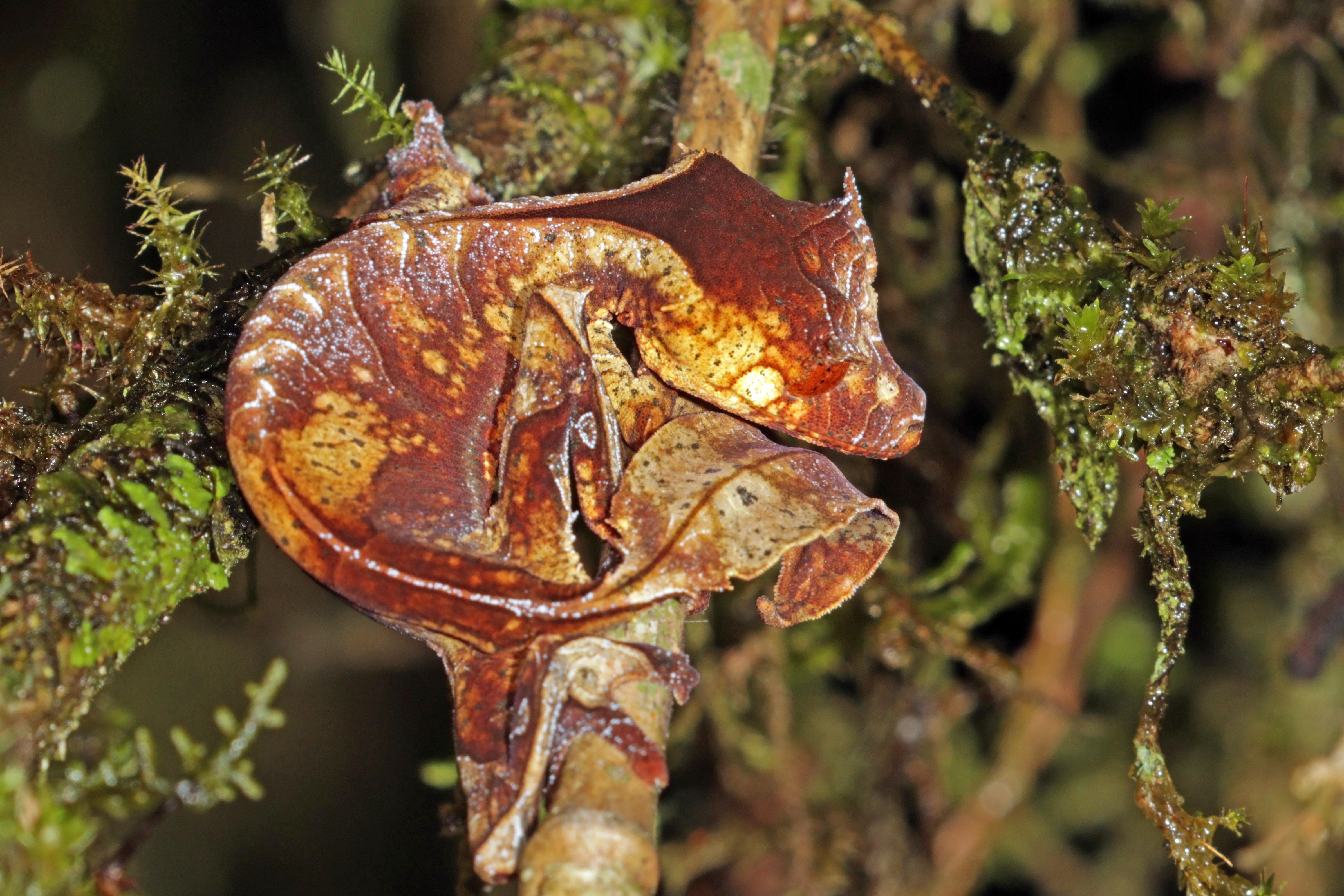
Leaf-tailed geckos are nocturnal lizards with a unique tail that resembles a leaf.
This tail provides excellent camouflage against predators, and leaf-tailed geckos are masters of disguise, blending seamlessly into their surroundings.
- Region of Habitat: Madagascar
- Scientific Name: Uroplatus
- Place of Origin: Madagascar
- Feeding Habits: Insectivorous, primarily insects
- What Sound They Make: Clicking and chirping
Fun Fact: Leaf-tailed geckos can flatten their bodies against tree bark to avoid detection by predators. They also have specialized skin flaps that help break up their outline.
25. Ladybug
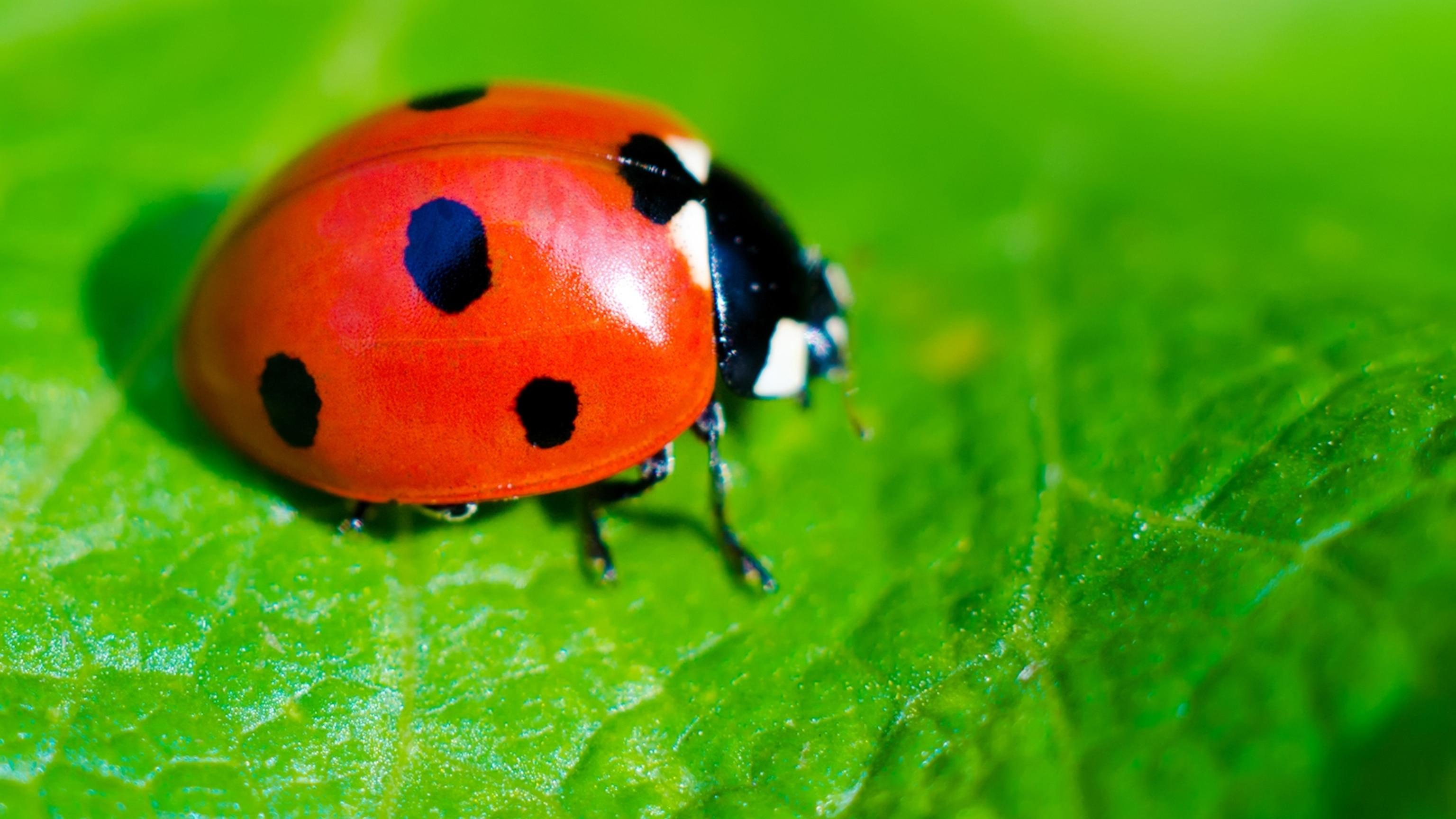
Ladybugs, or ladybirds or lady beetles, are small, round beetles, typically red or orange with black spots. They are beneficial insects known for preying on pests such as aphids.
- Region of Habitat: Worldwide, in various habitats
- Scientific Name: Coccinellidae
- Place of Origin: Worldwide
- Feeding Habits: Insectivorous, primarily aphids
- What Sound They Make: Silent (communicate with chemical signals)
Fun Fact: Ladybugs can secrete a yellow fluid from their legs to deter predators. The fluid has a foul taste and smell. They are also considered good luck in many cultures.
26. Locust
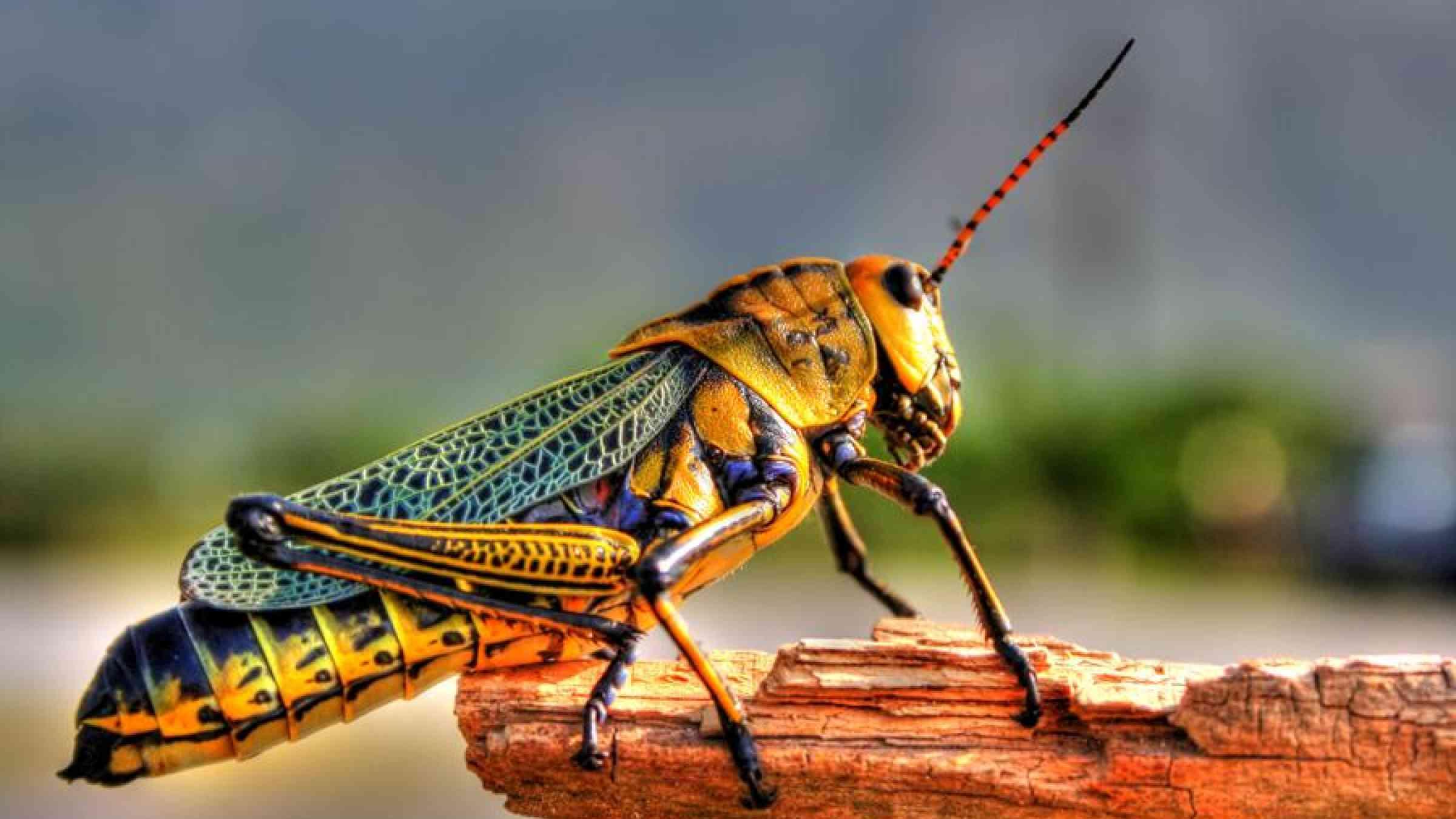
Locusts are grasshoppers that can form large, destructive swarms, causing significant damage to crops. They are known for their ability to change behavior and form swarms under certain environmental conditions.
- Region of Habitat: Africa, the Middle East, and Asia
- Scientific Name: Acrididae (family)
- Place of Origin: Worldwide
- Feeding Habits: Herbivorous, primarily grasses and crops
- What Sound They Make: Chirping and buzzing
Fun Fact: A single locust swarm can contain billions of individuals and travel over 100 kilometers daily. They have been a part of human history since ancient times, often causing significant agricultural damage.
27. Luna Moth
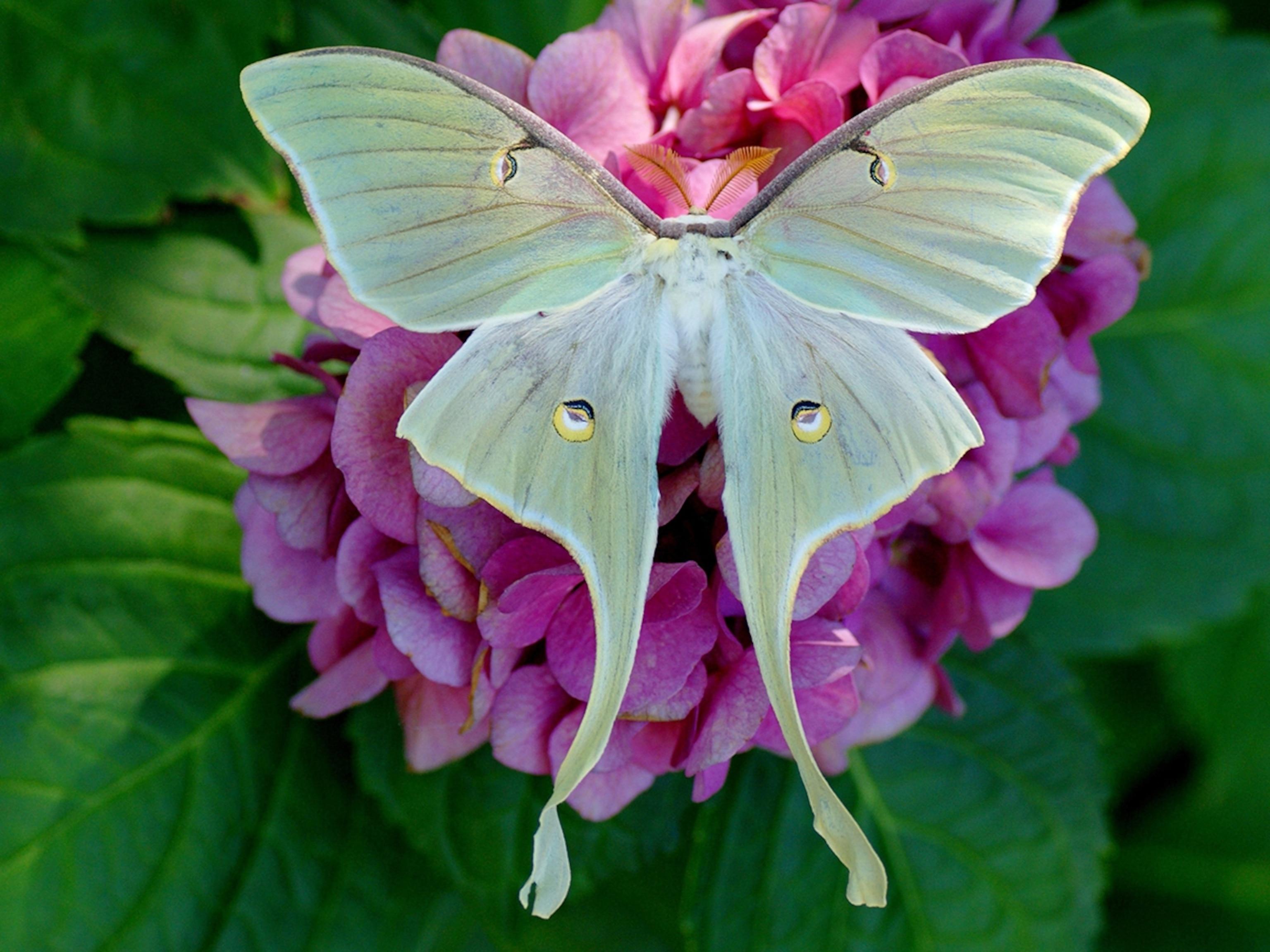
Luna Moths are large, green moths with long tails on their hindwings and a wingspan of up to 11.4 cm. They are nocturnal and attracted to light, and their short adult lifespan is focused on reproduction.
- Region of Habitat: North America, east of the Great Plains
- Scientific Name: Actias luna
- Place of Origin: North America
- Feeding Habits: Do not feed as adults
- What Sound They Make: Silent
Fun Fact: Luna Moths do not eat as adults; they rely entirely on fat reserves stored during the caterpillar stage. They are known for their beautiful, translucent wings and graceful flight.
28. Leafcutter Ant
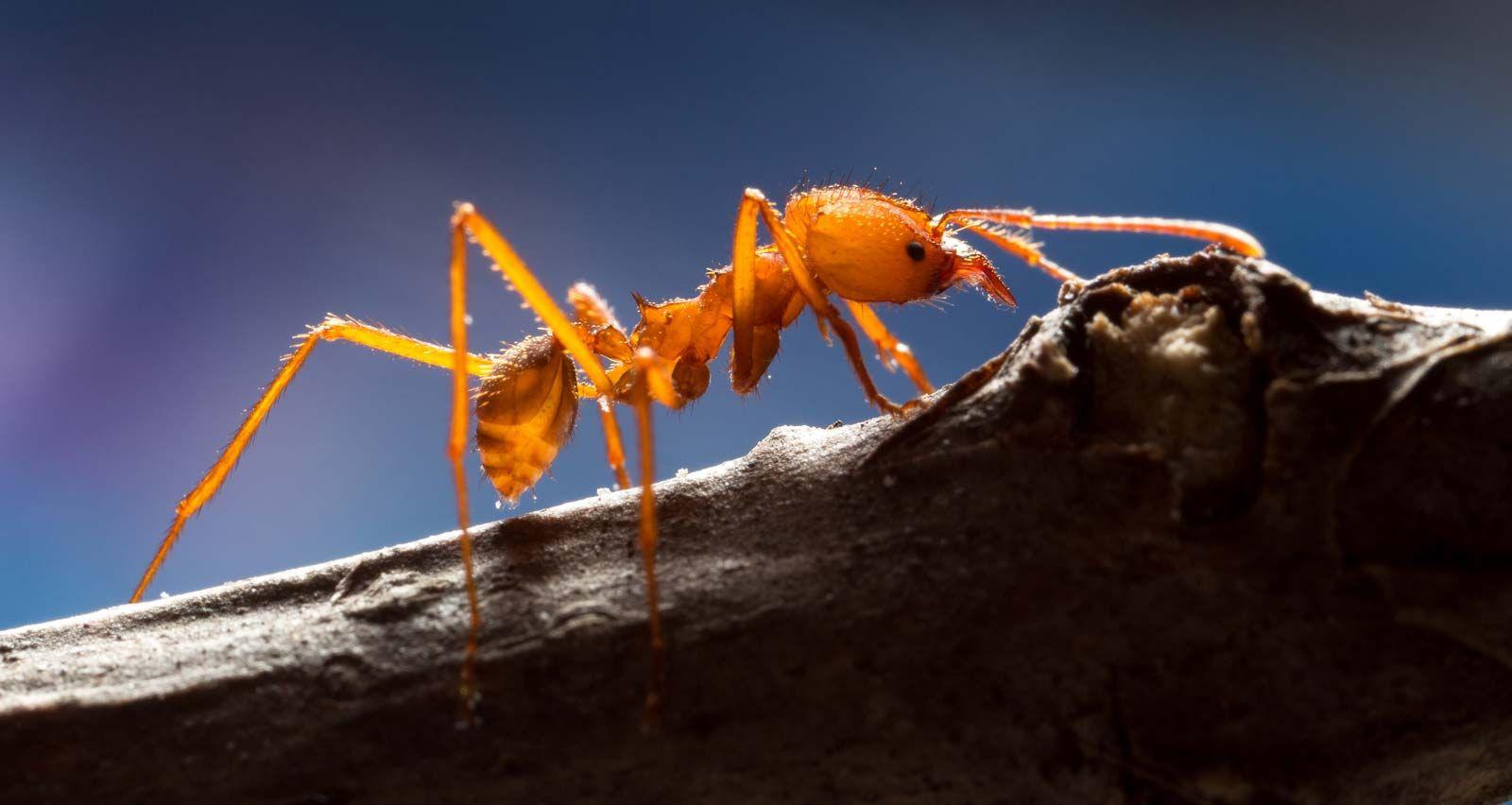
Leafcutter Ants are known for their unique behavior of cutting leaves and transporting them to their nests. They use the leaves to cultivate fungi, their primary food source.
- Region of Habitat: Central and South America
- Scientific Name: Atta and Acromyrmex
- Place of Origin: Central and South America
- Feeding Habits: Fungivorous, cultivating and eating fungi
- What Sound They Make: Silent (communicate with pheromones)
Fun Fact: Leafcutter Ants have been farming fungus for up to 50 million years, long before humans practiced agriculture.
They are also known for their complex social structures and division of labor.
29. Long-Winged Kite Spider
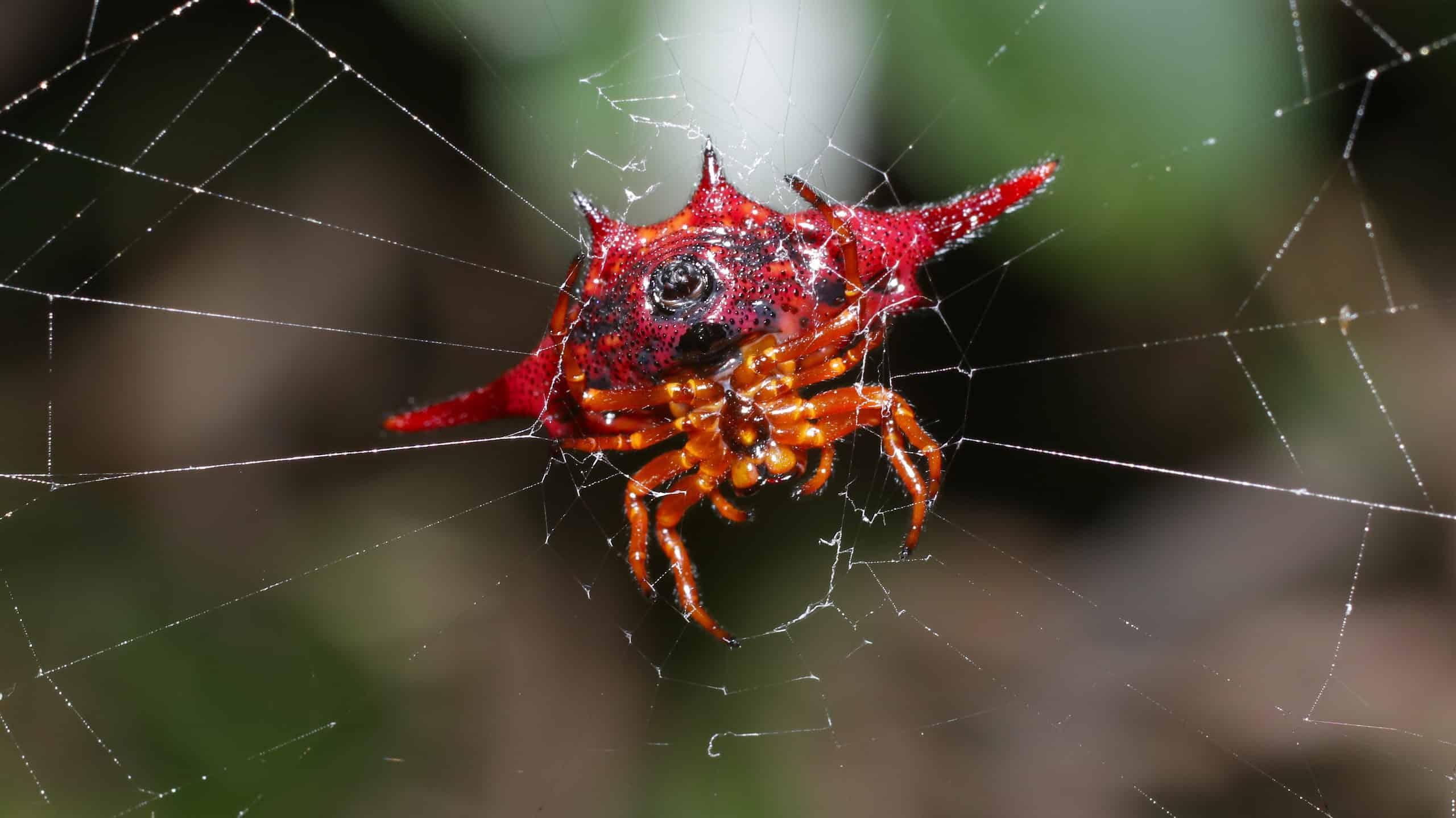
Long-winged kite Spiders are a type of orb-weaver spider known for their elongated spiked protrusions on their bodies, which resemble a kite.
They are diurnal and often found in gardens and forests.
- Region of Habitat: Tropical regions of Southern Africa
- Scientific Name: Gasteracantha versicolor
- Place of Origin: Southern Africa
- Feeding Habits: Insectivorous, primarily small insects
- What Sound They Make: Silent (communicate through vibrations)
Fun Fact: The long, pointed spikes on their bodies serve as a defense mechanism against predators, making them difficult to swallow.
They are also known for their colorful and unique appearance.
30. Leatherback Sea Turtle

Leatherback Sea Turtles are the largest of all living turtles and are notable for lacking a bony shell; instead, they have a leathery carapace.
They are highly migratory, traveling vast distances across oceans to find food and nesting sites.
- Region of Habitat: Worldwide in tropical and subtropical oceans
- Scientific Name: Dermochelys coriacea
- Place of Origin: Worldwide
- Feeding Habits: Carnivorous, primarily jellyfish
- What Sound They Make: Silent
Fun Fact: Leatherback Sea Turtles can dive to depths of over 1,200 meters, deeper than any other turtle species. They are also known for their extensive migratory patterns.
31. Lobster
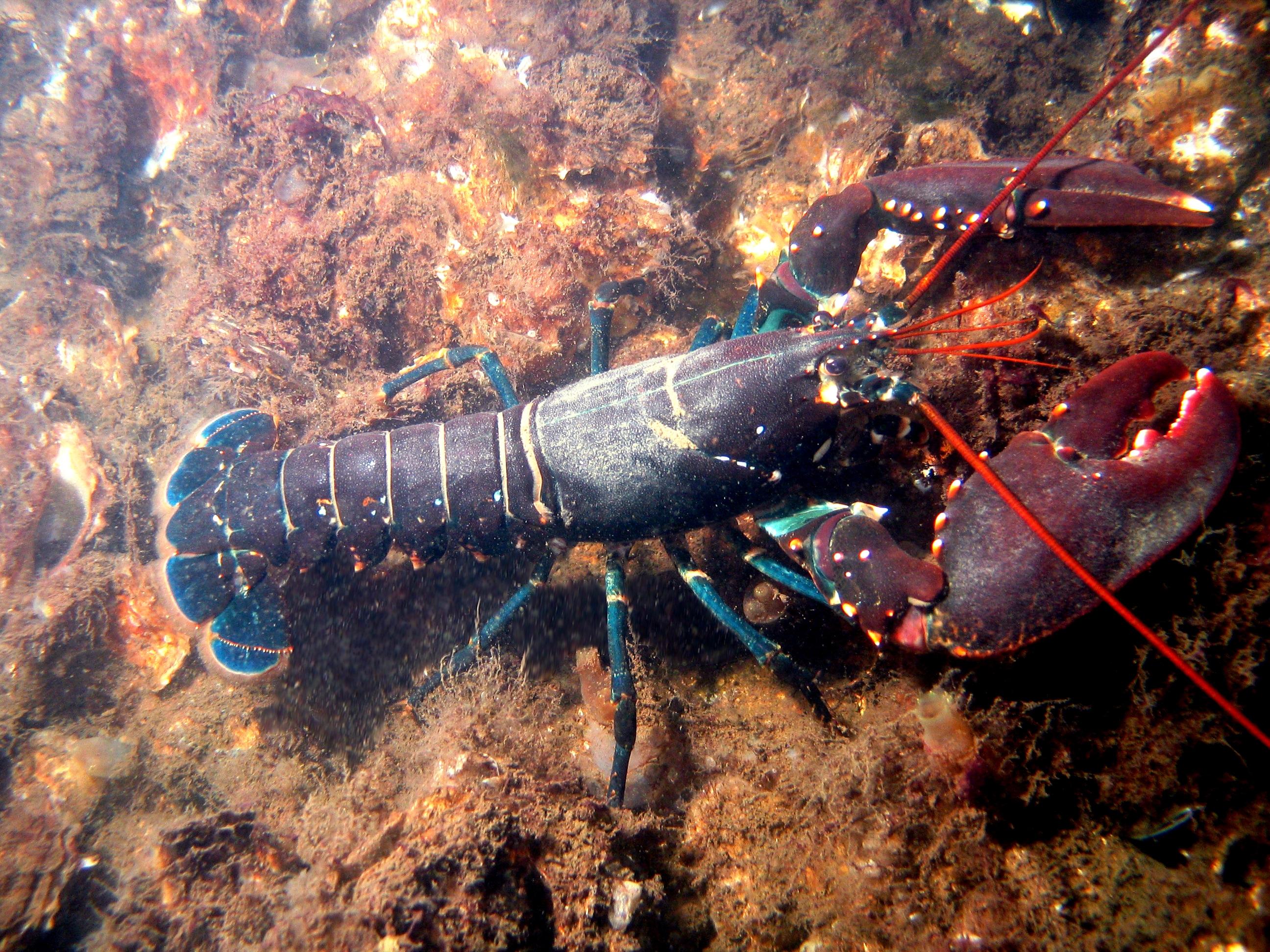
Lobsters are marine crustaceans with long bodies and muscular tails. They are typically found in caves or crevices on the sea floor.
They have a hard exoskeleton that they must shed to grow, and they are highly prized for their meat.
- Region of Habitat: Coastal waters of the Atlantic Ocean, notably off the coast of North America and Europe
- Scientific Name: Nephropidae
- Place of Origin: Atlantic Ocean
- Feeding Habits: Omnivorous, eating fish, mollusks, and algae
- What Sound They Make: Silent
Fun Fact: Lobsters can live up to 50 years, and some species can regenerate lost claws.
They are also known for their vibrant colors, which turn red when cooked.
32. Lemon Shark
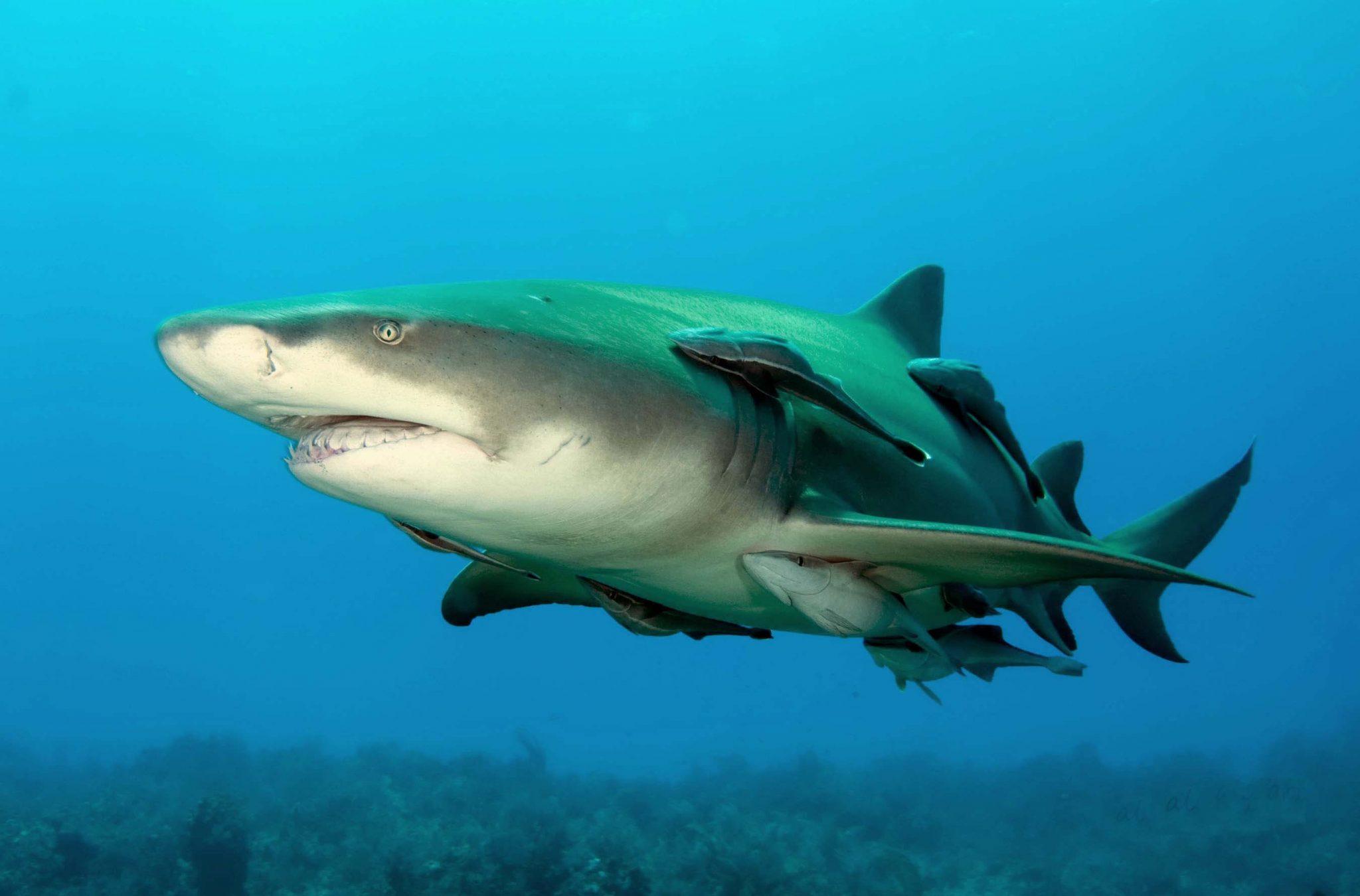
Lemon Sharks are medium-sized sharks named for their yellowish-brown skin, which helps them blend into sandy habitats.
They are known for their social behavior and can often be found in groups.
- Region of Habitat: Coastal waters of the Atlantic and Pacific Oceans
- Scientific Name: Negaprion brevirostris
- Place of Origin: Atlantic and Pacific Oceans
- Feeding Habits: Carnivorous, primarily fish and crustaceans
- What Sound They Make: Silent
Fun Fact: Lemon Sharks have electroreceptors that allow them to detect the electric fields produced by their prey. They are also known to return to the same nursery sites to breed.
33. Lionfish

Lionfish are venomous marine fish known for their striking appearance, with red, white, and brown stripes and long, showy pectoral fins.
They are invasive in some parts of the world and cause ecological damage.
- Region of Habitat: Native to the Indo-Pacific region but invasive in the Atlantic Ocean
- Scientific Name: Pterois
- Place of Origin: Indo-Pacific region
- Feeding Habits: Carnivorous, primarily small fish and invertebrates
- What Sound They Make: Silent
Fun Fact: Lionfish can release up to 30,000 eggs every four days during the breeding season.
They are also known for their venomous spines, which can cause severe pain to predators and humans.
34. Lumpfish
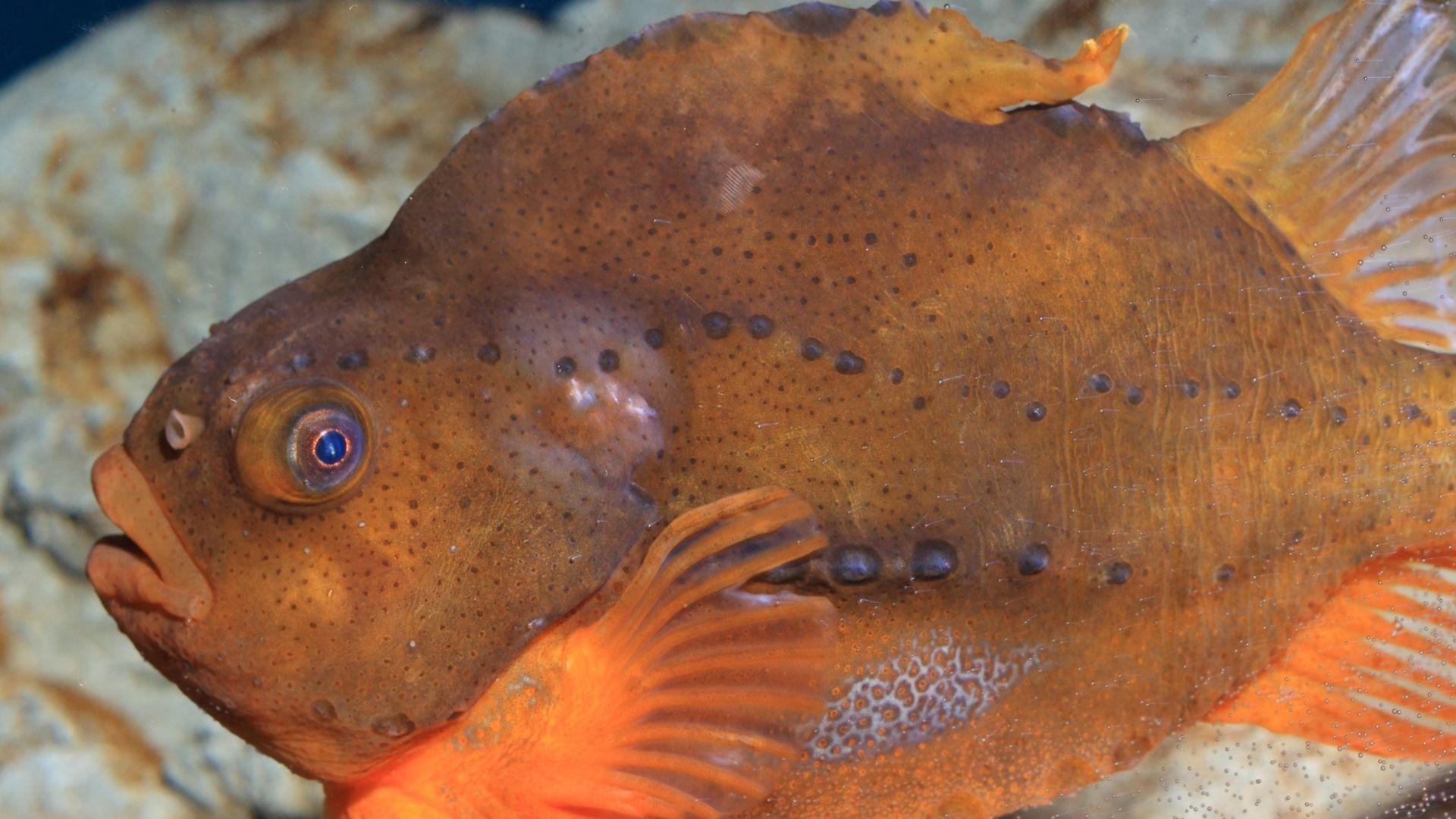
Lumpfish are small, stout fish known for their lumpy, uneven skin and suction cups formed from their pelvic fins, which they use to adhere to rocks and other surfaces.
- Region of Habitat: North Atlantic Ocean, Arctic Ocean, and adjacent seas
- Scientific Name: Cyclopterus lumpus
- Place of Origin: North Atlantic and Arctic Oceans
- Feeding Habits: Omnivorous, eating small invertebrates and algae
- What Sound They Make: Silent
Fun Fact: Lumpfish roe is harvested and sold as a less expensive alternative to caviar.
They are also known for their unique ability to stick to surfaces using their pelvic fins.
35. Lamprey
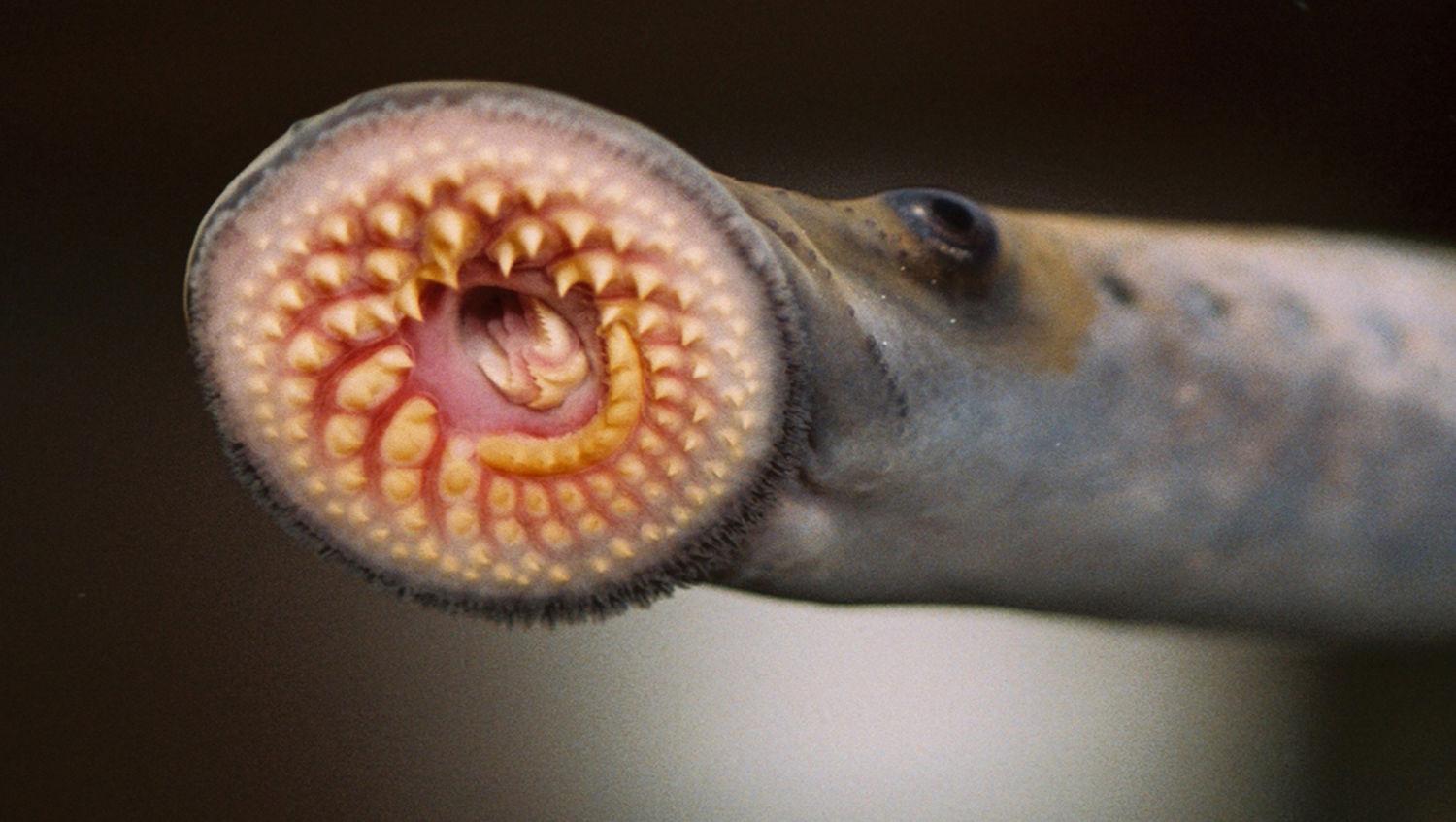
Lampreys are jawless fish characterized by their funnel-like sucking mouth. They are parasitic and attach to other fish to feed their blood and body fluids.
- Region of Habitat: Coastal and freshwater habitats in temperate areas
- Scientific Name: Petromyzontiformes
- Place of Origin: Temperate regions worldwide
- Feeding Habits: Parasitic, feeding on blood and body fluids
- What Sound They Make: Silent
Fun Fact: Lampreys have existed for over 360 million years, making them one of the oldest living vertebrate species.
They are also known for their unique life cycle, including a larval stage that can last several years.
36. Lungfish
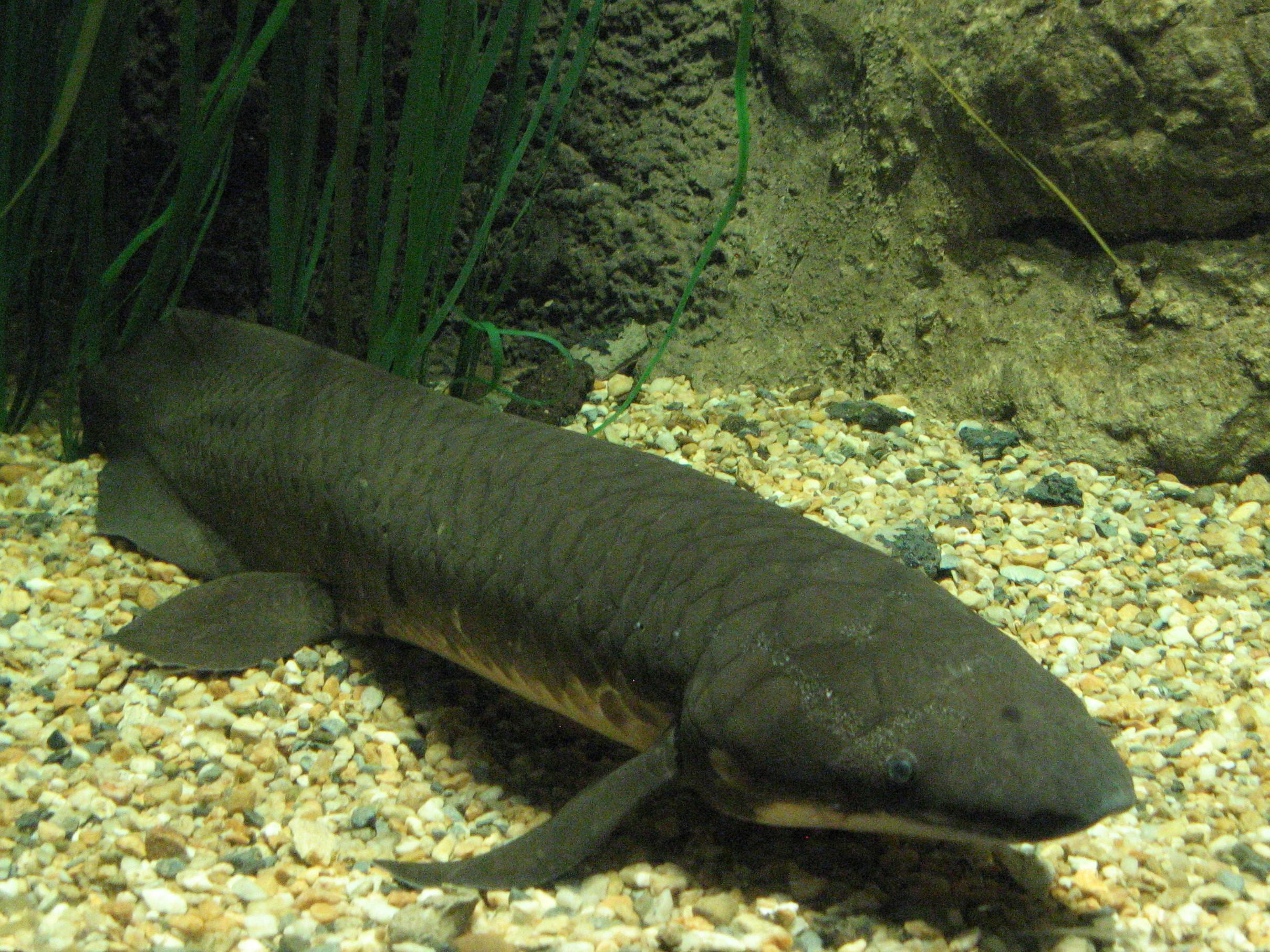
Lungfish are freshwater fish known for their ability to breathe air using a lung-like organ.
They can survive in environments with low oxygen levels and dormancy in mud during dry seasons.
- Region of Habitat: Africa, South America, and Australia
- Scientific Name: Dipnoi
- Place of Origin: Africa, South America, and Australia
- Feeding Habits: Omnivorous, eating small invertebrates and plant matter
- What Sound They Make: Silent
Fun Fact: Lungfish can live out of water for several years in a state of dormancy.
They are also known for their ancient lineage, dating back nearly 400 million years.
37. Leopard Seal
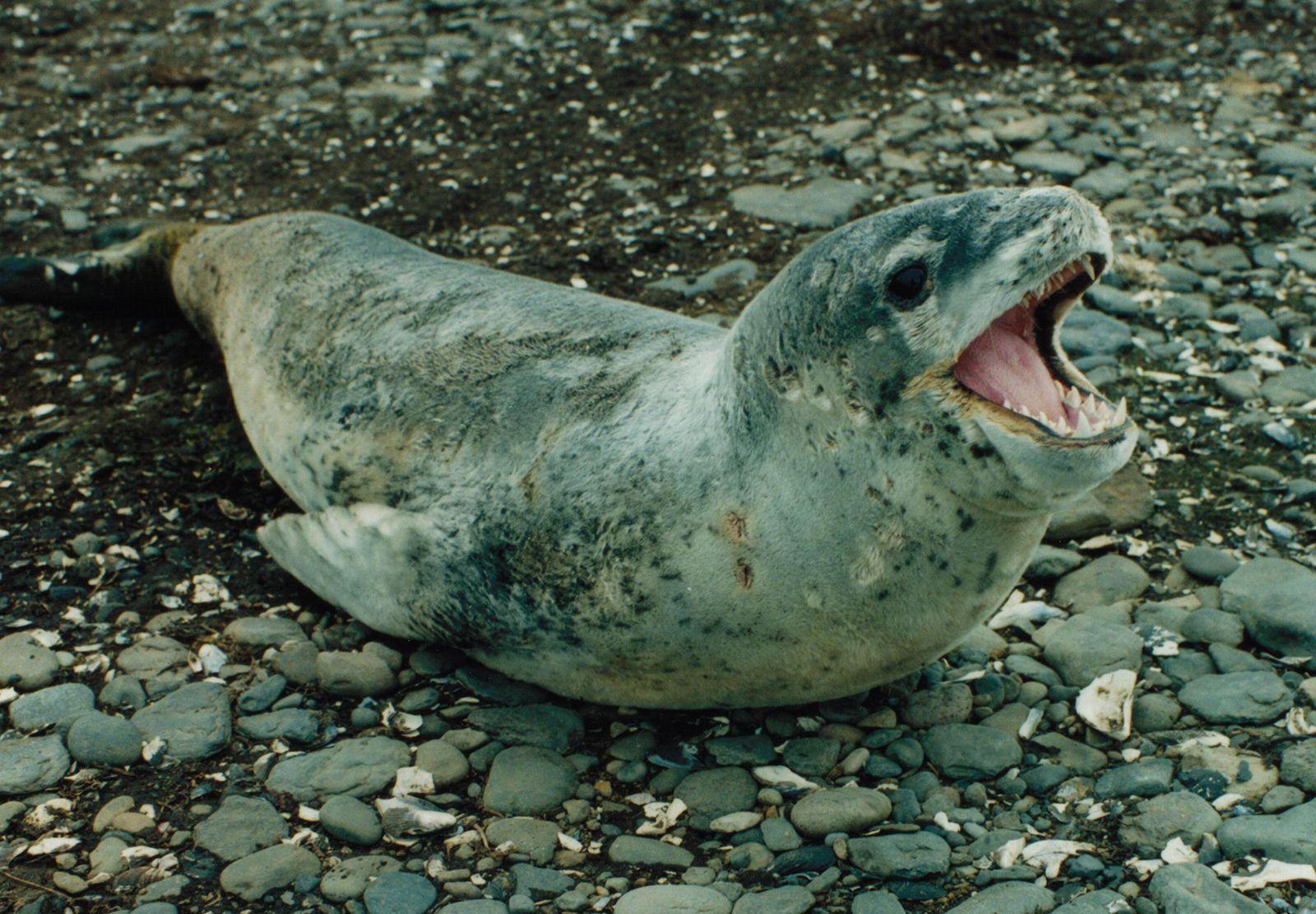
Leopard Seals are large, powerful predators in Antarctic waters. They are known for their spotted coats and fearsome hunting skills.
They prey on a variety of species, including penguins and other seals.
- Region of Habitat: Antarctic and sub-Antarctic regions
- Scientific Name: Hydrurga leptonyx
- Place of Origin: Antarctic regions
- Feeding Habits: Carnivorous, primarily penguins, fish, and other seals
- What Sound They Make: Growls and grunts
Fun Fact: Leopard Seals are one of the top predators in their environment, with few natural enemies.
They are also known for their distinctive vocalizations, which can be heard underwater.
38. Leptocephalus
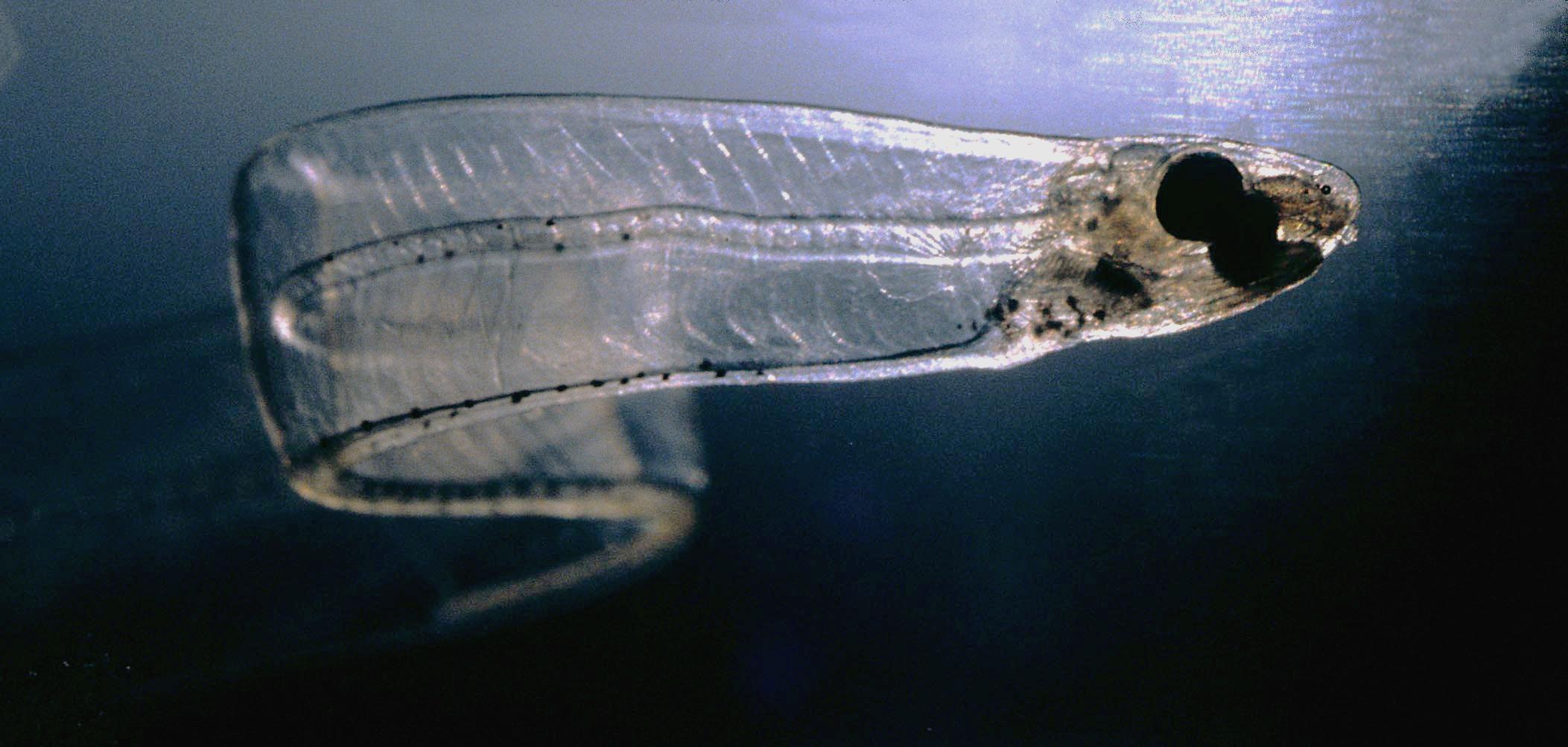
Leptocephalus refers to the larval stage of eels, characterized by their transparent, leaf-like bodies. This stage is critical for the early life cycle of many eel species.
- Region of Habitat: Worldwide in tropical and subtropical oceans
- Scientific Name: Elopomorpha (larval stage)
- Place of Origin: Worldwide
- Feeding Habits: Planktonic, feeding on small particles and organisms
- What Sound They Make: Silent
Fun Fact: Leptocephali can drift in ocean currents for months or years before transforming into juvenile eels. They are also known for their unique transparent bodies.
39. Loggerhead Shrike
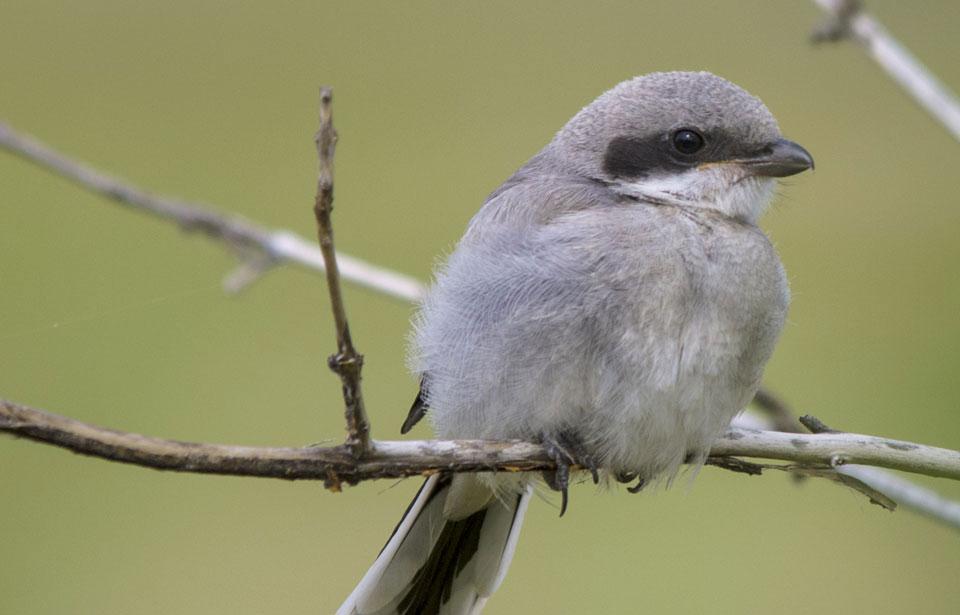
Loggerhead Shrikes are medium-sized passerine birds known for their distinctive black mask and hooked beak.
They are predatory and have a unique habit of impaling their prey on thorns or barbed wire.
- Region of Habitat: North America, from Canada to Mexico
- Scientific Name: Lanius ludovicianus
- Place of Origin: North America
- Feeding Habits: Carnivorous, primarily insects and small vertebrates
- What Sound They Make: Harsh calls and whistles
Fun Fact: Loggerhead Shrikes are often called “butcherbirds” due to their method of storing food. They are also known for their keen hunting skills and territorial behavior.
40. Loon
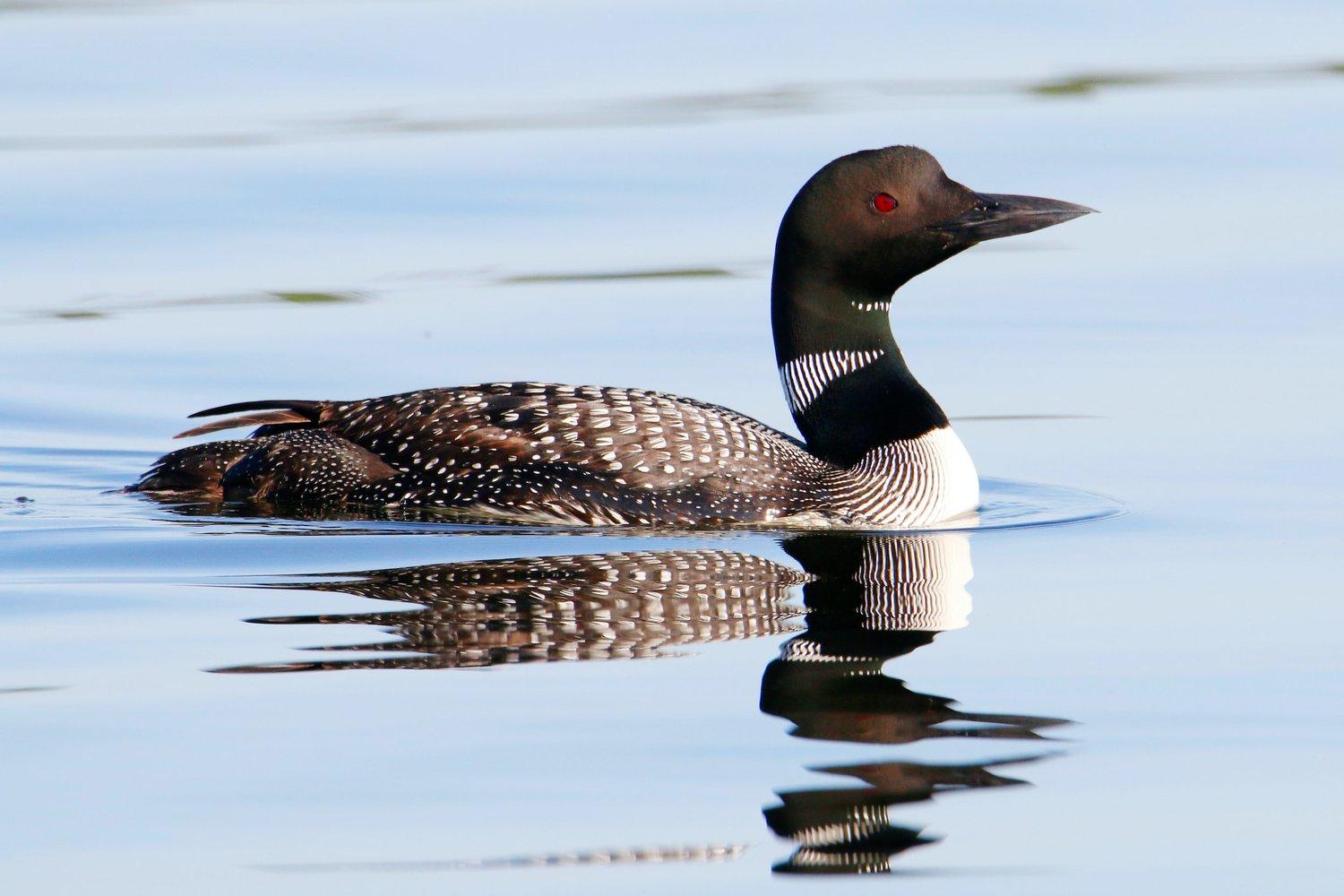
Loons are large, diving waterbirds known for their eerie calls and striking feathers.
They are excellent swimmers and divers, hunting fish underwater.
- Region of Habitat: Northern North America, Europe, and Asia
- Scientific Name: Gavia
- Place of Origin: Northern Hemisphere
- Feeding Habits: Carnivorous, primarily fish and aquatic invertebrates
- What Sound They Make: Wailing calls and yodels
Fun Fact: Loons can dive up to 60 meters and stay underwater for several minutes.
They are also known for their hauntingly beautiful calls, often heard echoing across lakes.
Conclusion
As we wrap up our journey through the animal kingdom’s “L” section, it’s clear that nature’s diversity never ceases to amaze us.
From the slow-moving loris to the powerful liger, these animals with L names showcase various adaptations and lifestyles.
Whether the Labrador Retriever’s friendly demeanor or the leatherback sea turtle’s incredible diving abilities, each creature has its own fascinating story.
These animals remind us of the importance of biodiversity and the need to protect habitats worldwide.
As you’ve discovered, the world of animals starting with L is full of surprises and wonders.
We hope this exploration has sparked your curiosity about these incredible creatures and perhaps even inspired you to contribute to wildlife conservation efforts.

